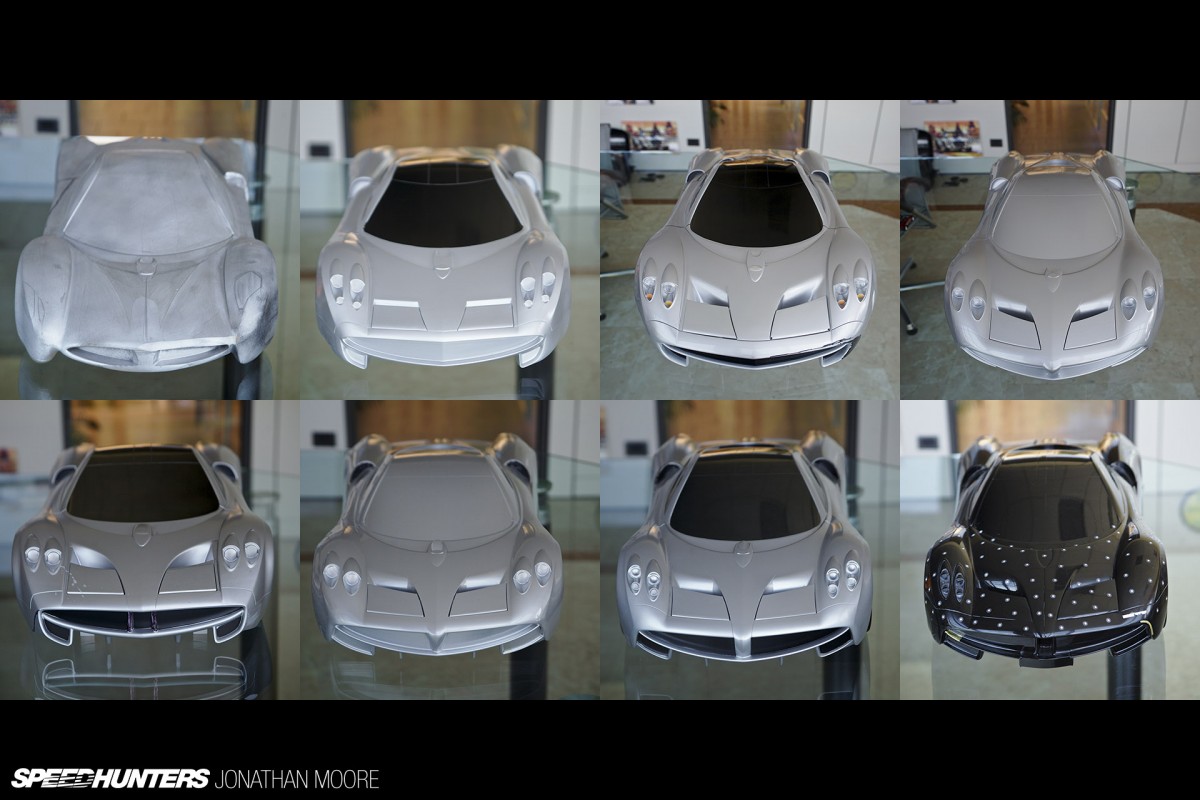
Before all the cutting-edge technology gets involved into making today’s hypercars: Inconel; carbon; titanium; ceramic; unobtainium – there’s often a gloriously organic starting point. These are the physical models crafted by hand, overseen by an expert eye, showing that even the most extreme, high-tech car can involve crafts that go back to the dawn of the automobile. I looked at the clay workshop used by students at IED in a previous story, but there was also something else that I wanted to show you, another example of the very human side of modern car design. This one comes from one man’s office, that of Horacio Pagani.

I was lucky enough to tag along for the launch of the Huayra back in 2011, a moment which signalled the end of a long and involved development process for a car which somehow had to follow in the gargantuan footsteps of the brutal Zonda family.
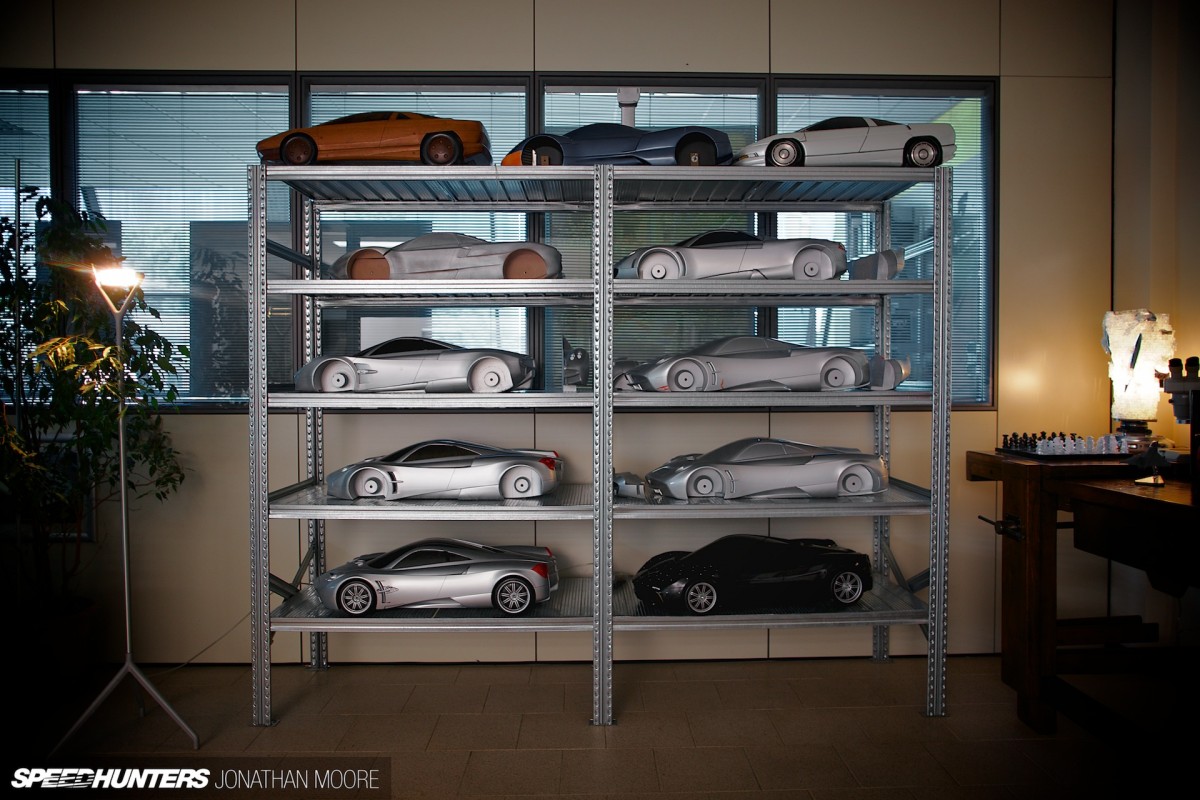
What I was particularly interested in was a set of heavy Ureol models sat on a shelving rack outside Mr Pagani’s office; they’d caught our collective Speedhunting eye on previous visits to Pagani at San Cesario sul Panaro, near Modena in Italy. Visual representations of the early stages of the refining of the Huayra’s design.
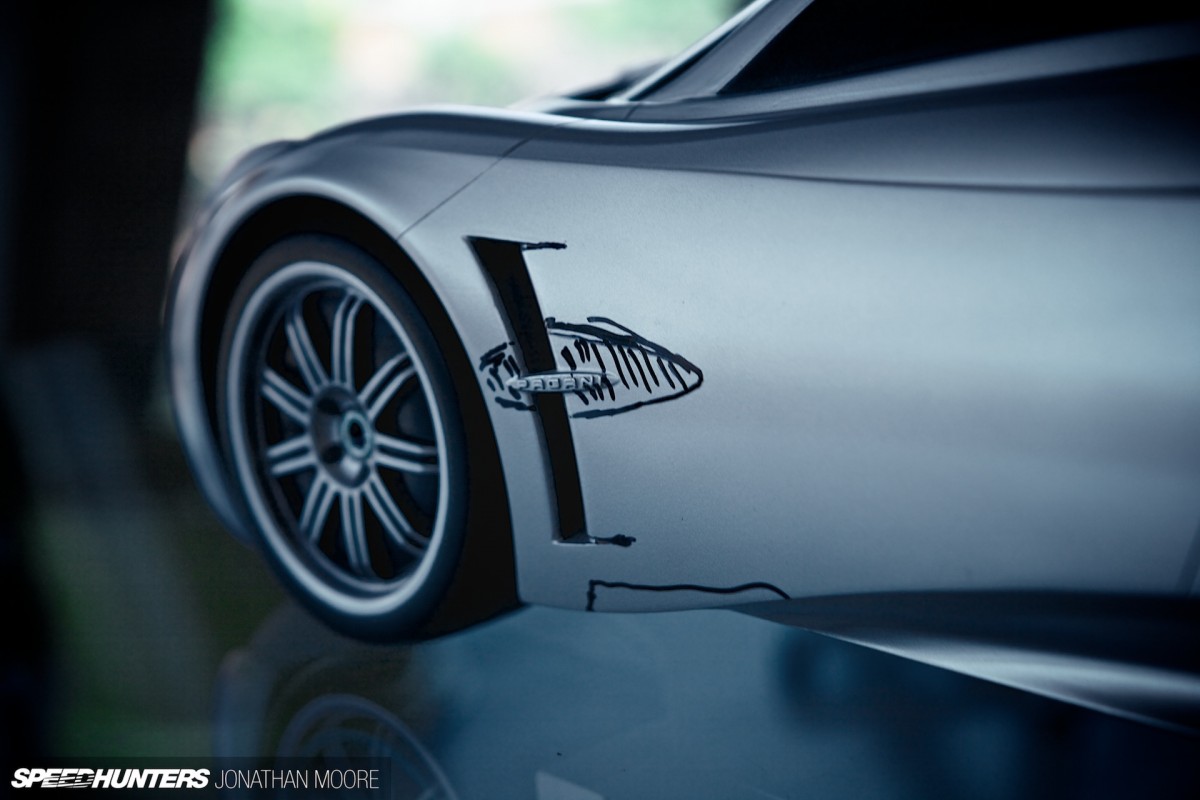
Before I get to these eight models there are even more links in the chain of the Huayra story.
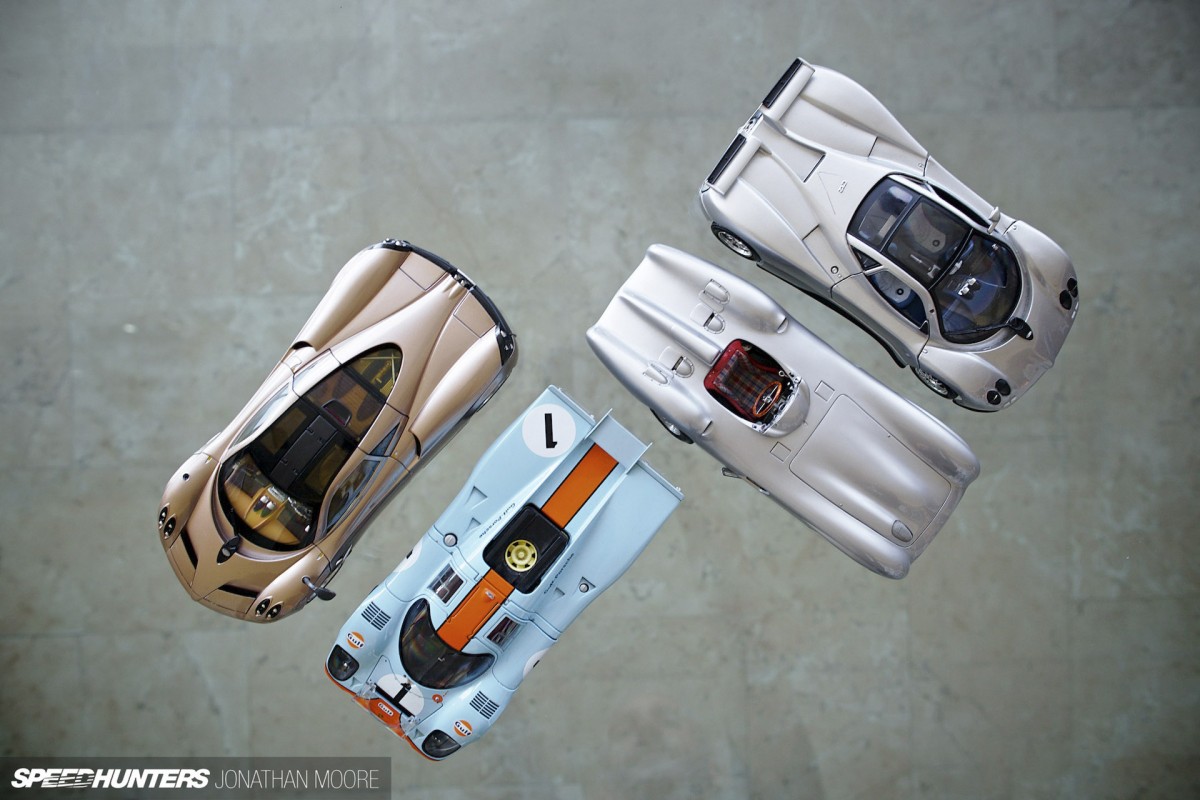
They were just part of the incredible amount of ephemera that is everywhere you look around Pagani HQ. Horacio Pagani lays out his influences and inspiration for all to see.
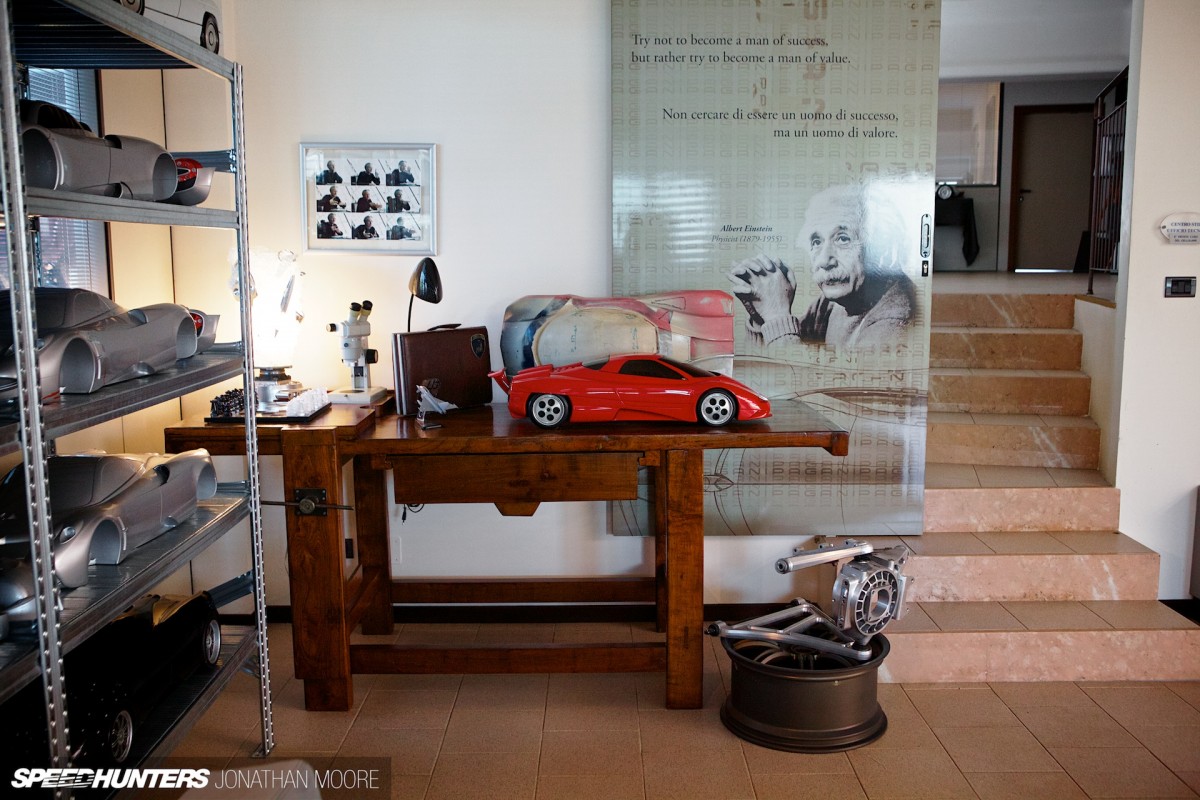
The whole Pagani operation is like a scaled-up version of what you imagine his bedroom might have been like when he was young.
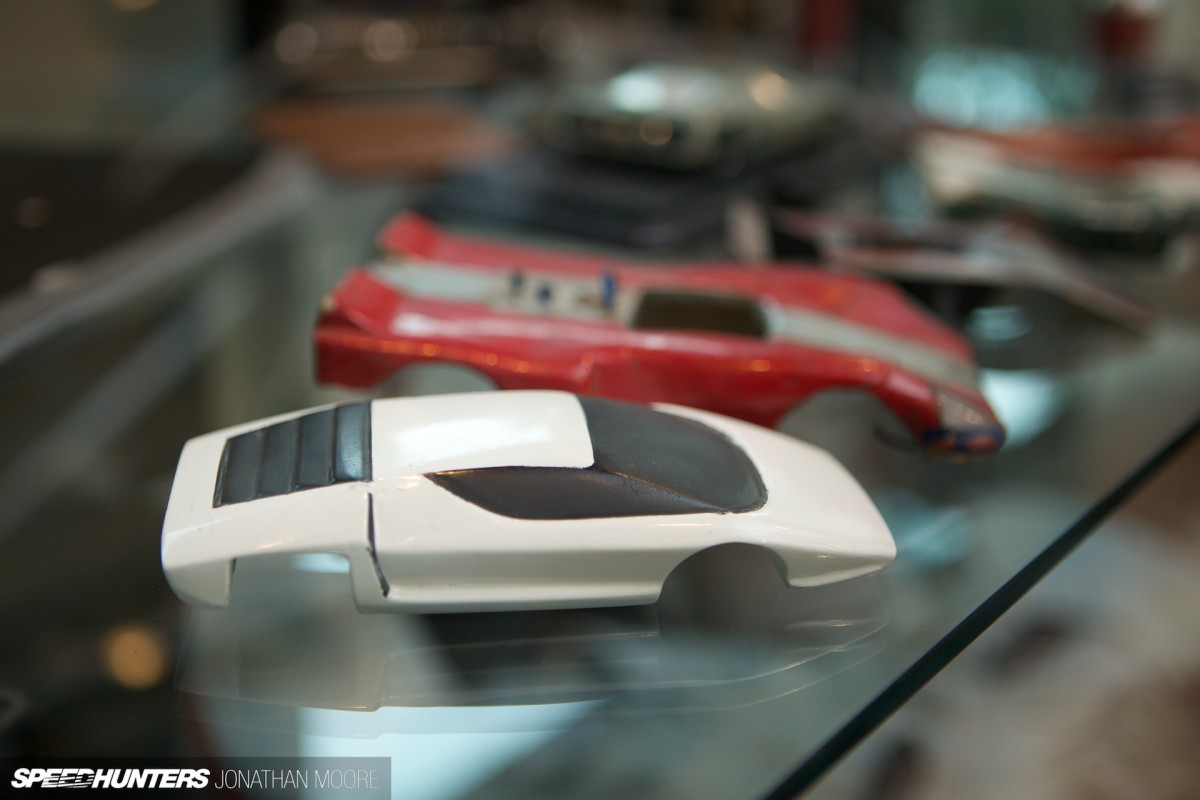
All around are reminders of previous lives and previous projects, right back to some of the original toy cars a young Horacio whittled away from pieces of balsa wood.
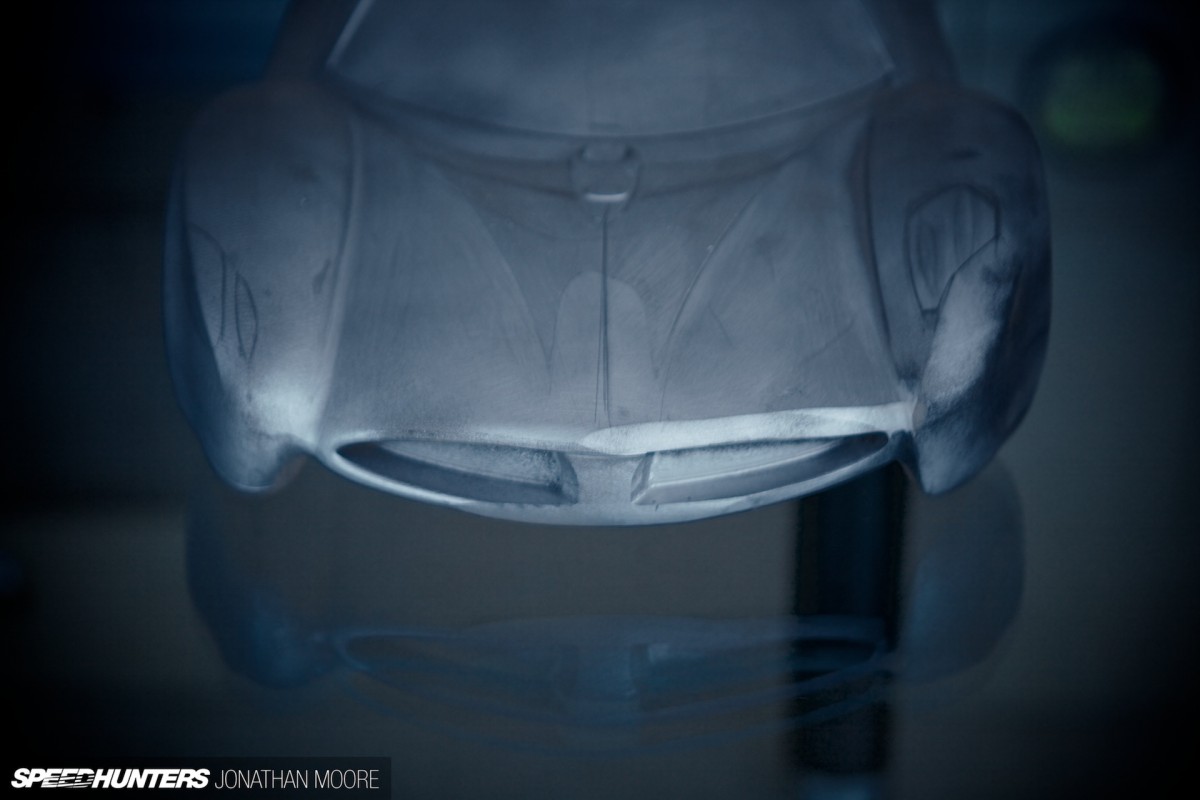
It seems like little has changed despite the rapid expansion of Pagani – and that’s no bad thing at all. A very positive form of envy and respect was my natural reaction to roaming the floors of Pagani HQ.
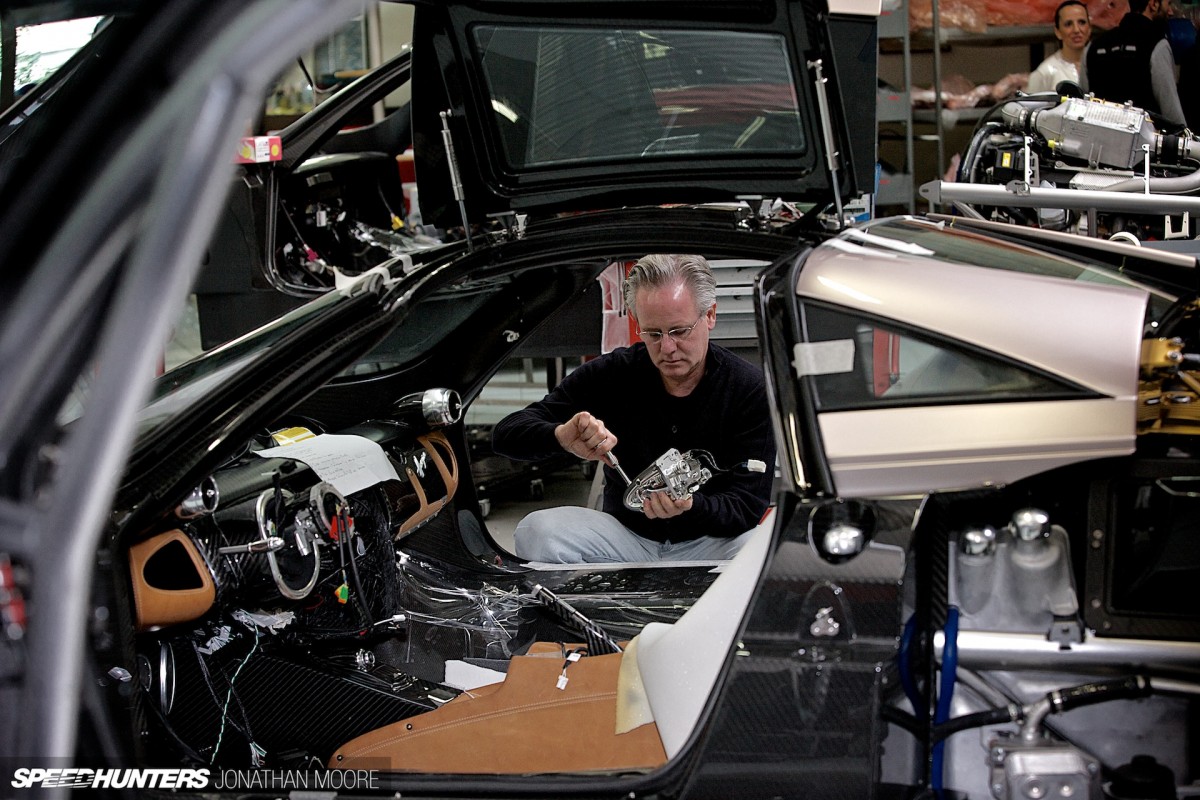
After all, Horacio Pagani is a man who has always played with cars – it’s just now they’re extraordinarily expensive hypercars, hand-made by his team of artisans.
The Raging Bull & The Racing Icon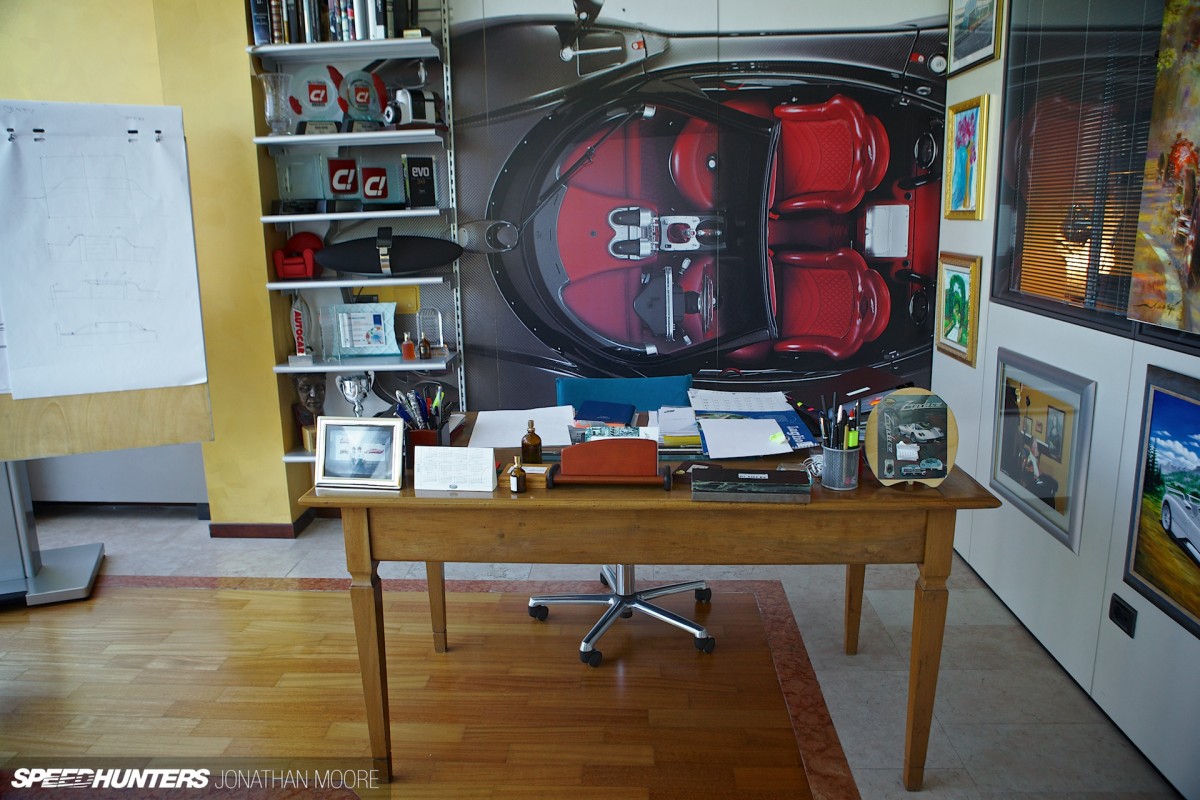
I had the slightly nerve-wracking offer of shooting the Polyurethane models in Mr Pagani’s office. It’s so full of personal effects that I couldn’t help but feel a little intrusive, but I was promised it was fine – even when Horacio himself returned from a meeting halfway through the shoot…
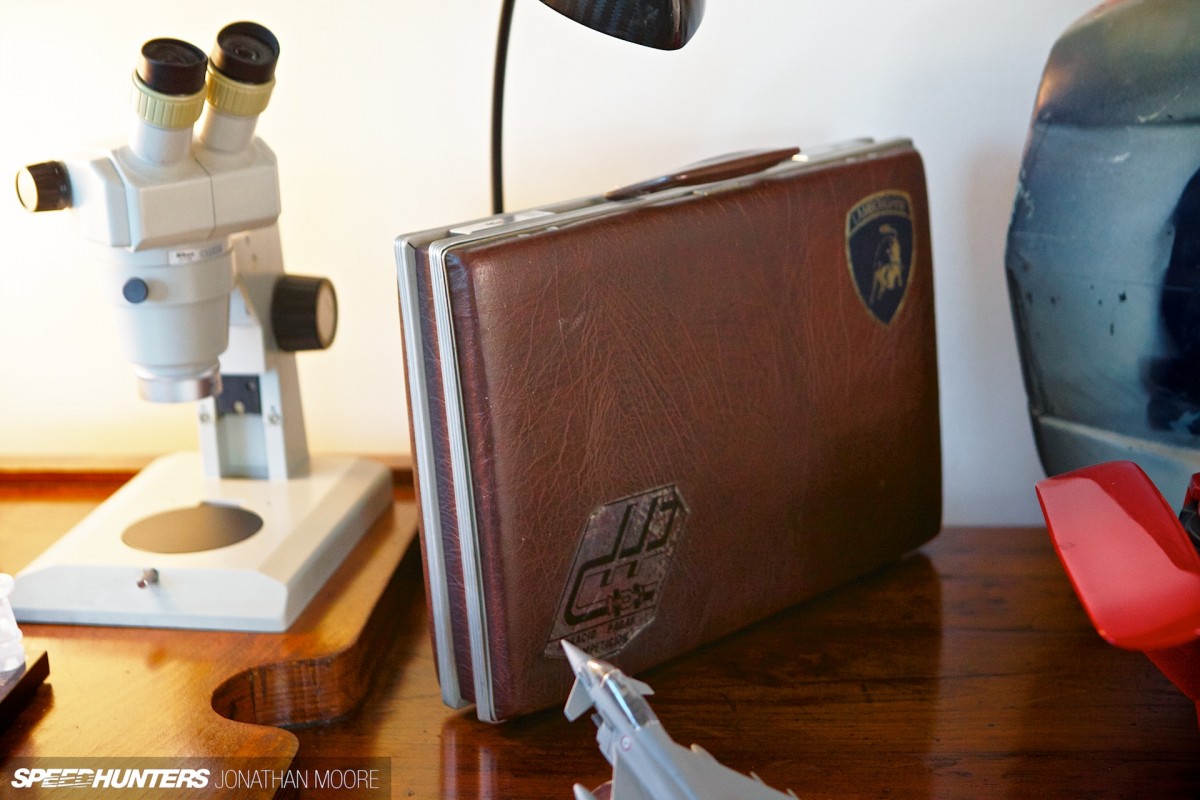
Next to the rack of models outside his office was an original workbench used by Horacio, with more evidence of his early days working for Lamborghini.
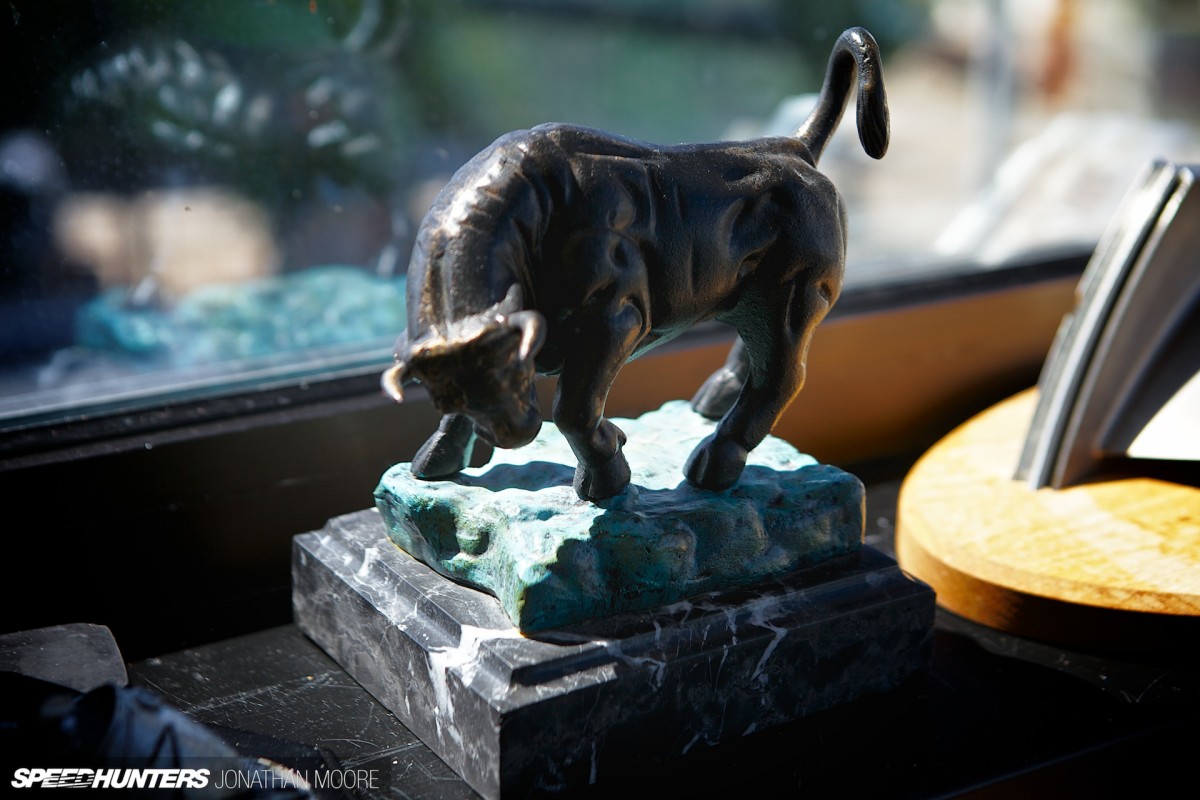
That time at Lamborghini in ’80s was both his classroom and playground, providing the framework that drives the current company. He worked on both the Countach Evoluzione (one of the first cars to use a carbon fibre monocoque) and the Diablo, where his composite know-how really evolved.
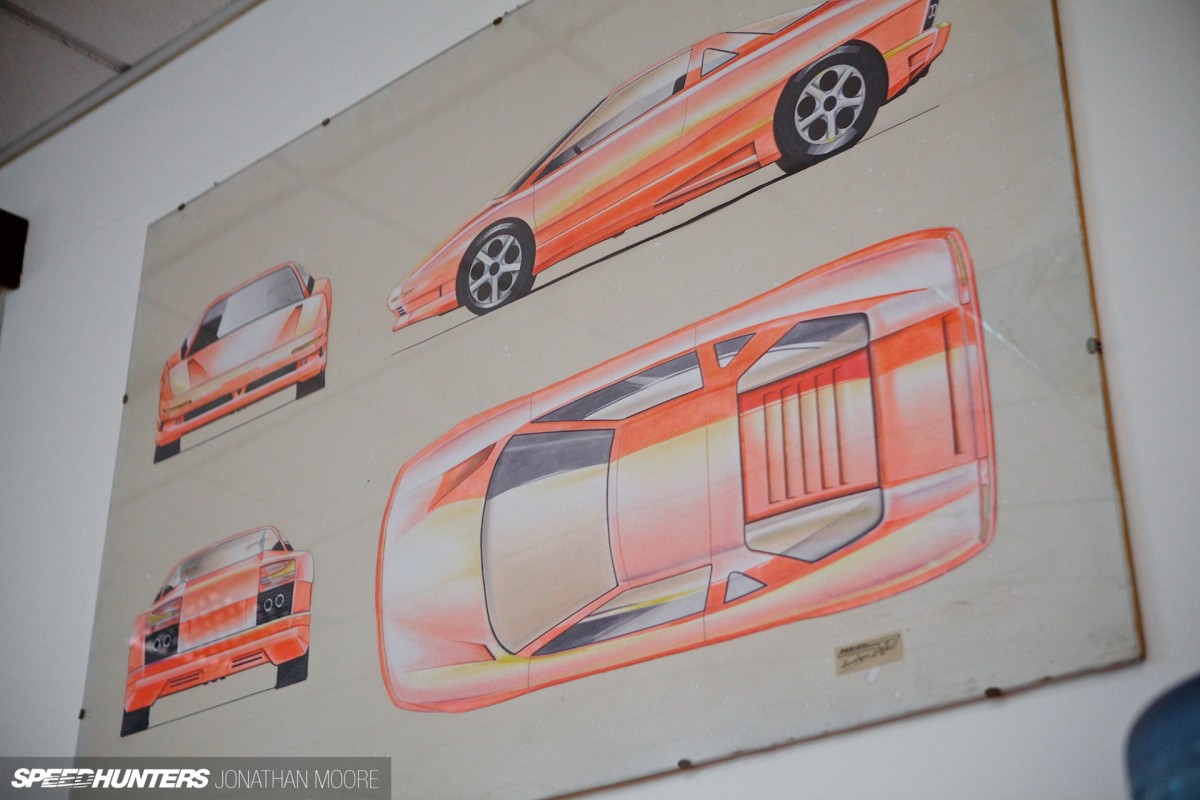
The Gallardo? The idea behind the wedge-shaped, compact supercar was a twinkle in Horacio Pagani’s eye well over a decade before it went into production under Lamborghini’s new VAG ownership.
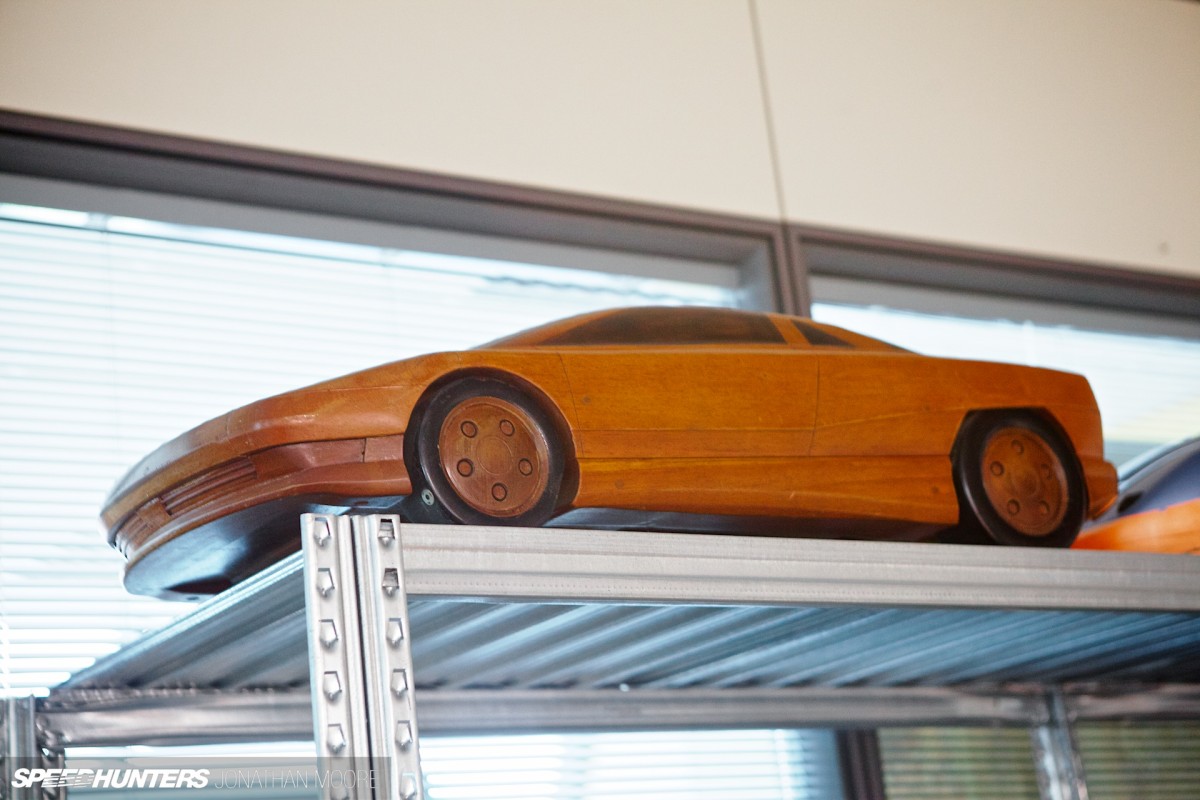
Of course, there’s also a wooden model of that as well… The principals of sketching and model-making are woven into Horacio Pagani’s DNA.
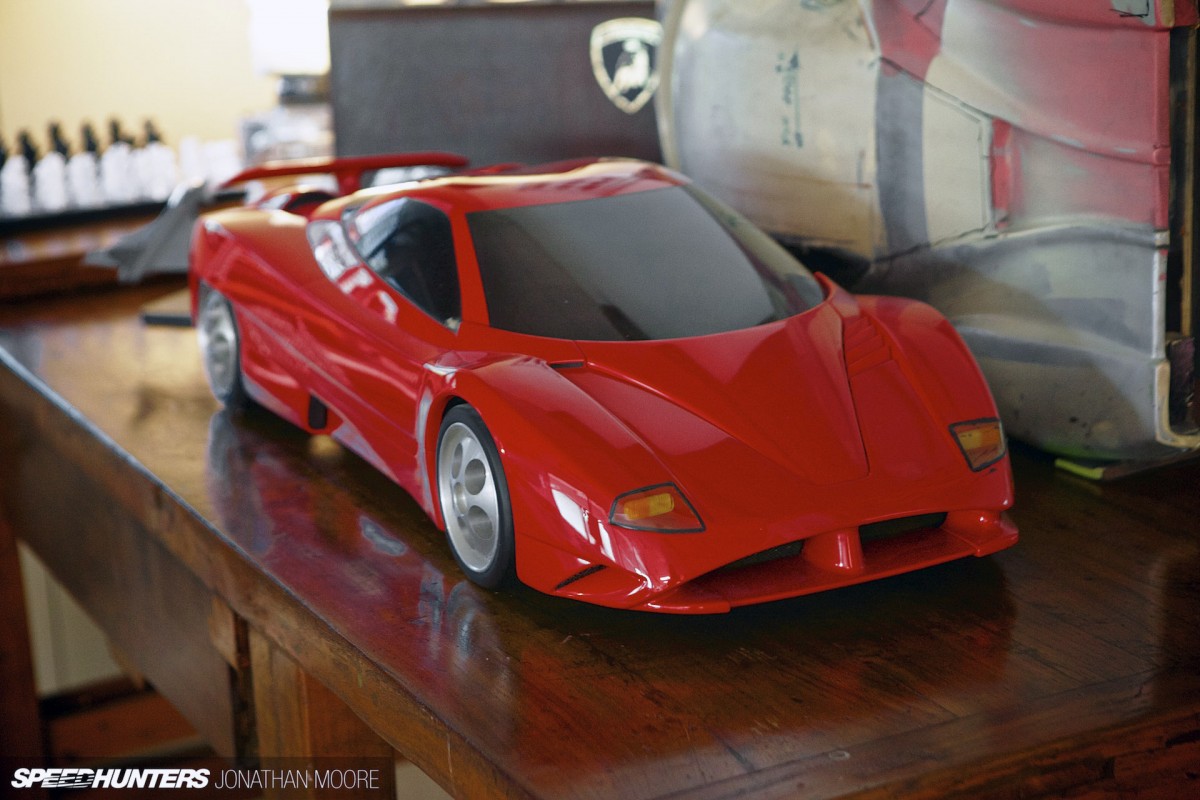
One of his final projects for Lamborghini was this, the L30 concept. Notice something familiar? Okay, notice lots of familiar things?! With Pagani founding his own company in 1991, whilst still collaborating with Lamborghini, the scene was set for his own cars – and the lineage that would take us to the Huayra.
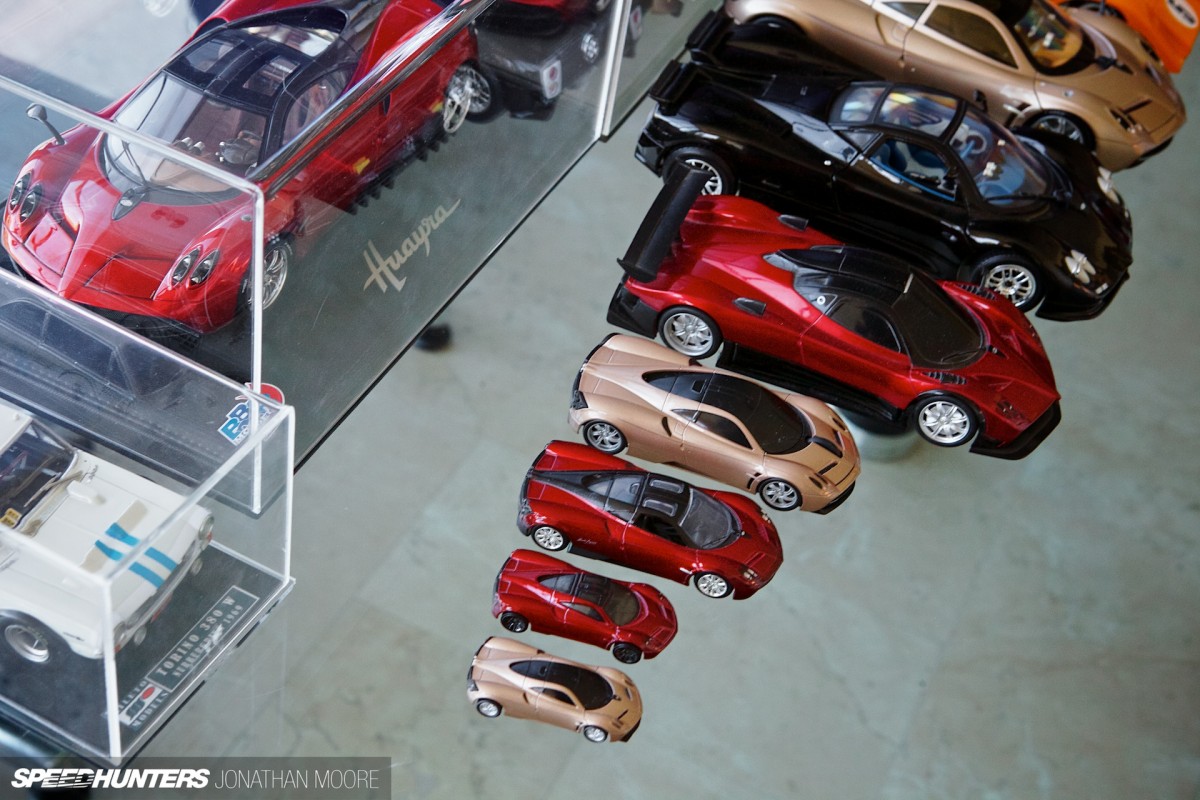
In the same way that I only ‘believe’ the commitment and passion of racing drivers who show respect for the history of their sport, so it is for car designers and model cars. The carry-over of a continuing love of model cars should be a key part of anybody involved in the art of the automobile.
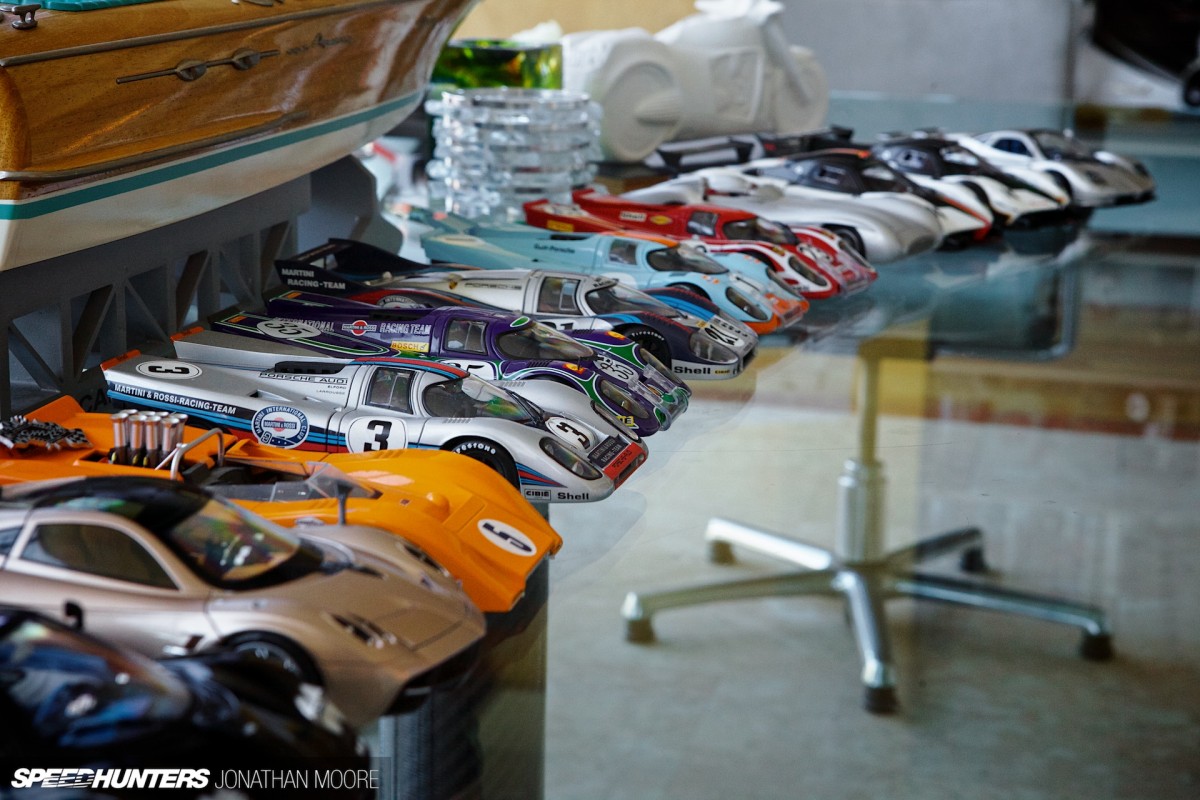
I’ve seen them on the desks of all the great designers, usually in, under and on top of a whole load of other books, toys and reference material. A clear desk is the sign of an empty mind, in my view… However, I might just be looking for self justification!
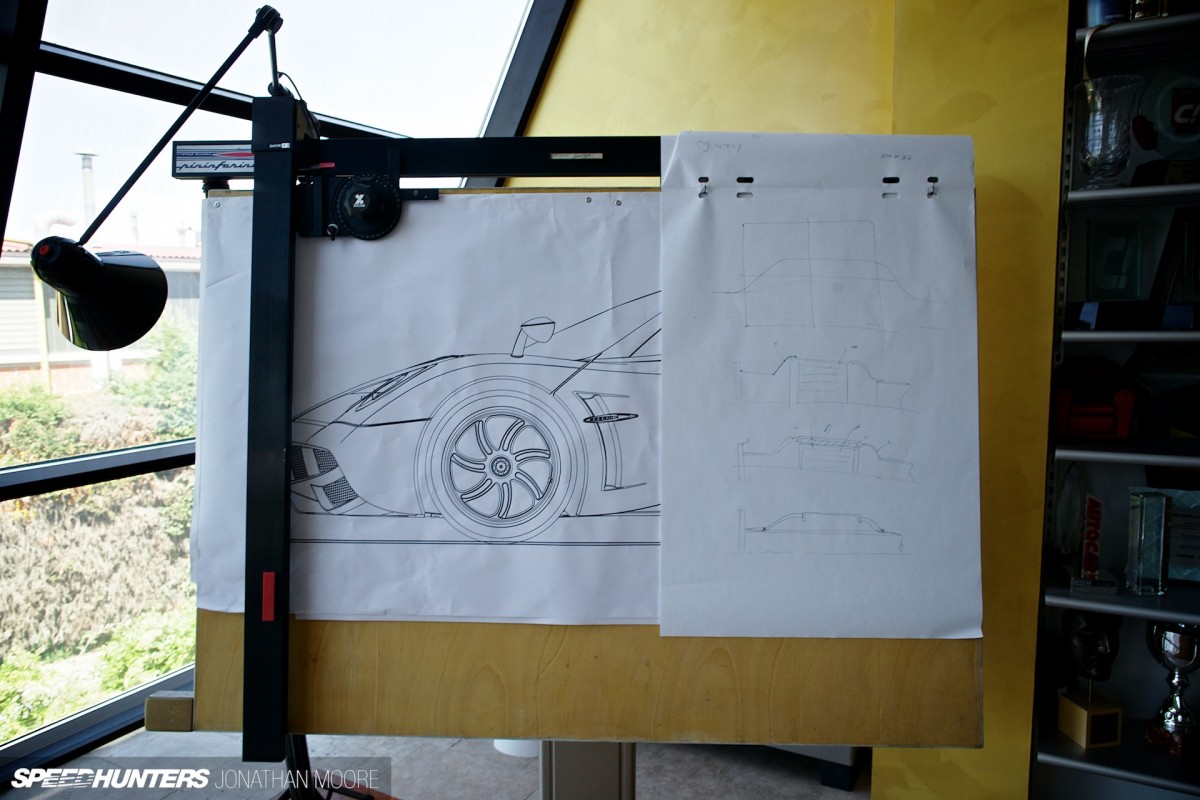
Pagani’s communications manager, Luca Venturi, was kindly talking me through both the collection and how the models were used in the development of the Huayra. Something that was also stressed – and allowed me to, well, play with toy cars for a bit – was the missing link in styling terms between the Zonda and the Huayra.

Enter the Porsche 917. It’s not a car that usually causes much argument – not liking a 917 is a rare thing to admit to – but Horacio Pagani has a self-professed love affair with 917s that causes nothing but admiration. Not only is his office full of them (in physical and picture form), but he also has a large collection of RC cars, 40 of which are 917s!
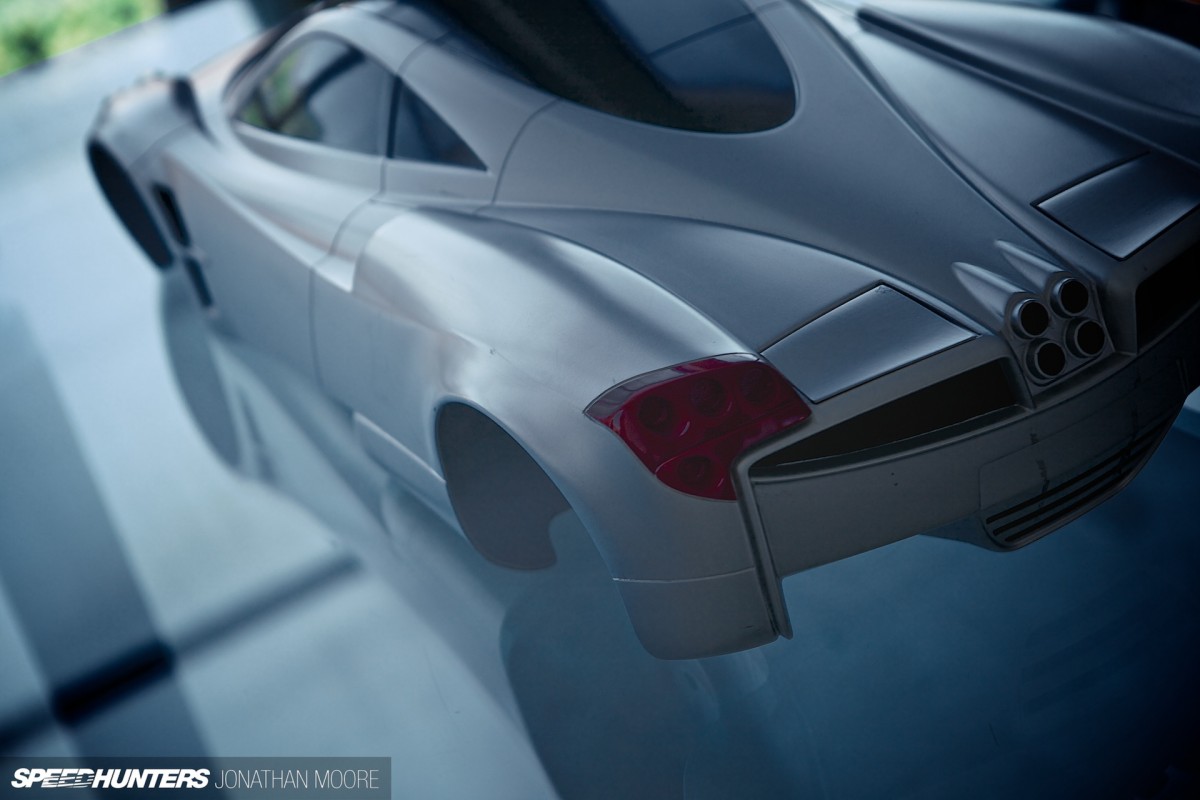
The importance of the 917 to Pagani is quite spiritual. Though not directly attributable as is perhaps the case with the styling of the Zonda, the Huayra nevertheless leans on the general feel of that legendary Le Mans racer from the ’70s, a sinuous reinterpretation if you will.
Eight Evolutions To Hypercar Revolution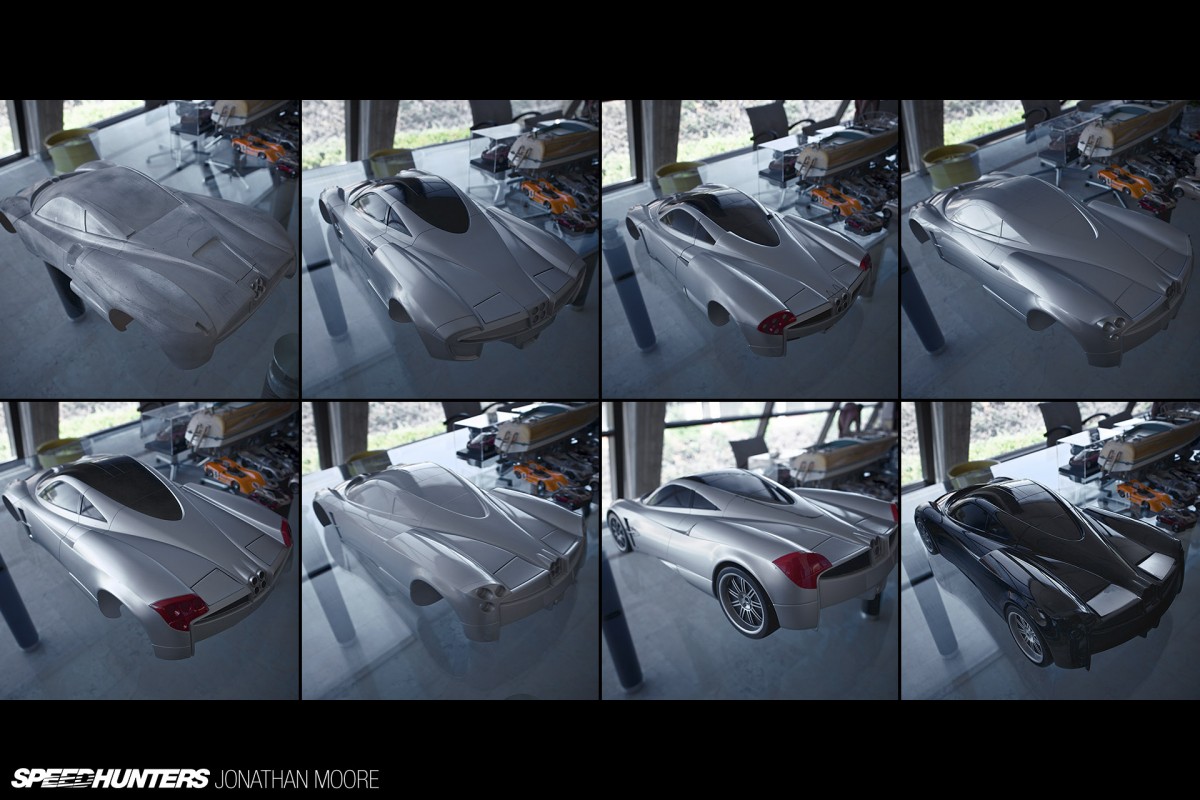
Horacio’s skill with carving was brought back into play for these development mock-ups of the Huayra: styling bucks made from solid blocks of Ureol which he started making in 2003.
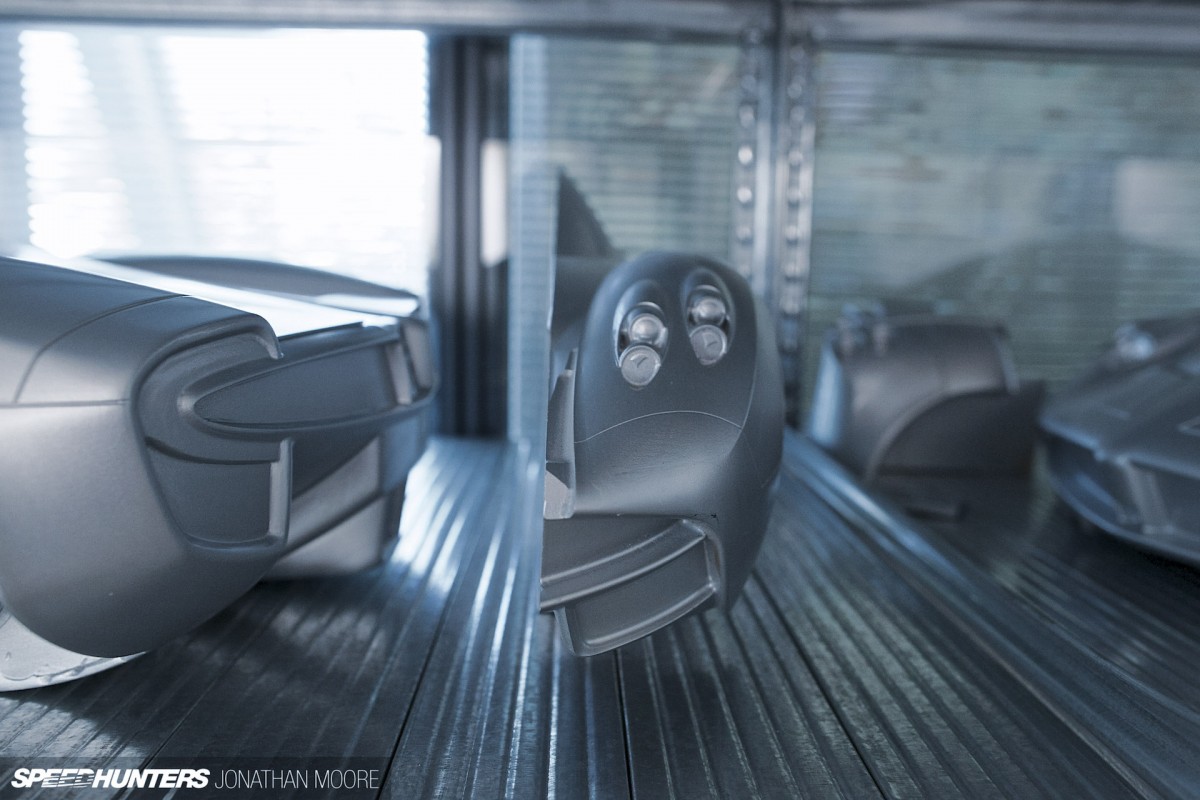
During the evolution of the Huayra’s design, these eight scale models were complemented by same-scale cut-away detail blocks and eventually two full-size prototypes.
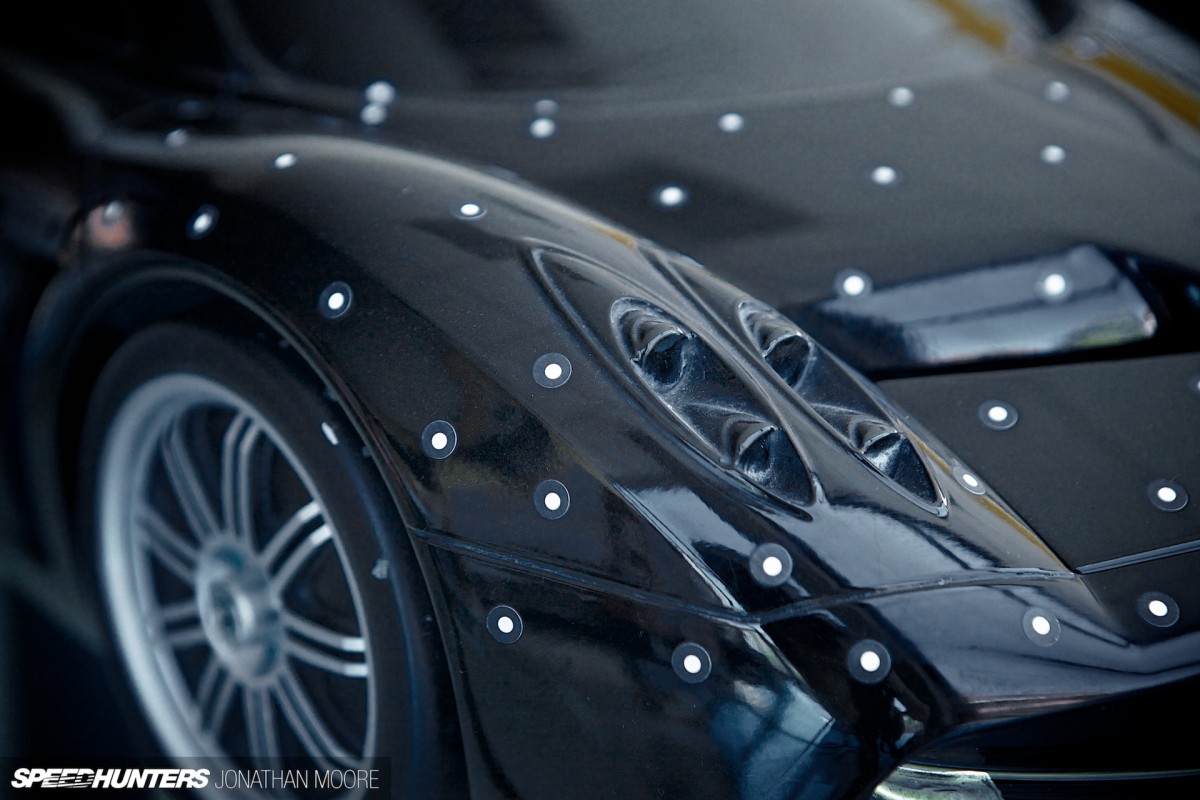
The importance of the models was more than purely aesthetic. By the final iteration, the model was being used in the wind tunnel to get baseline aero data.
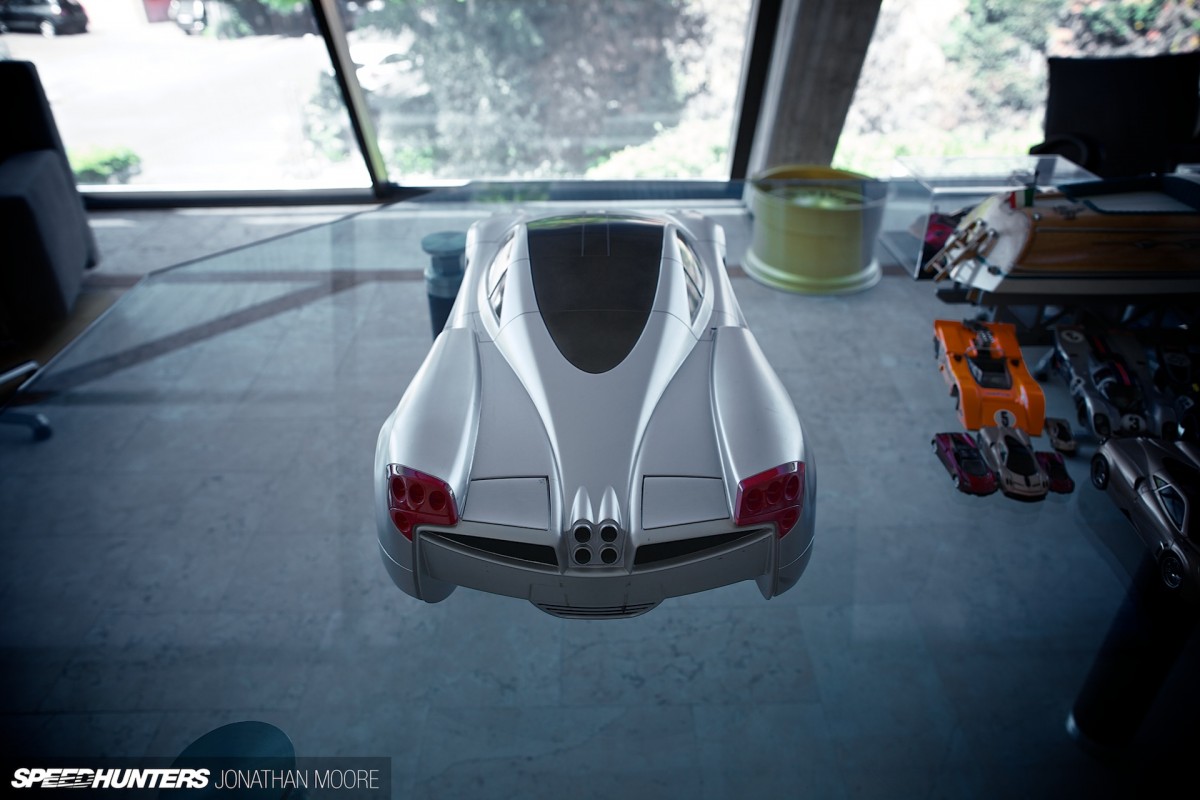
These were big things – and surprisingly heavy, needing the two of us to safely carry them in and out of the office.
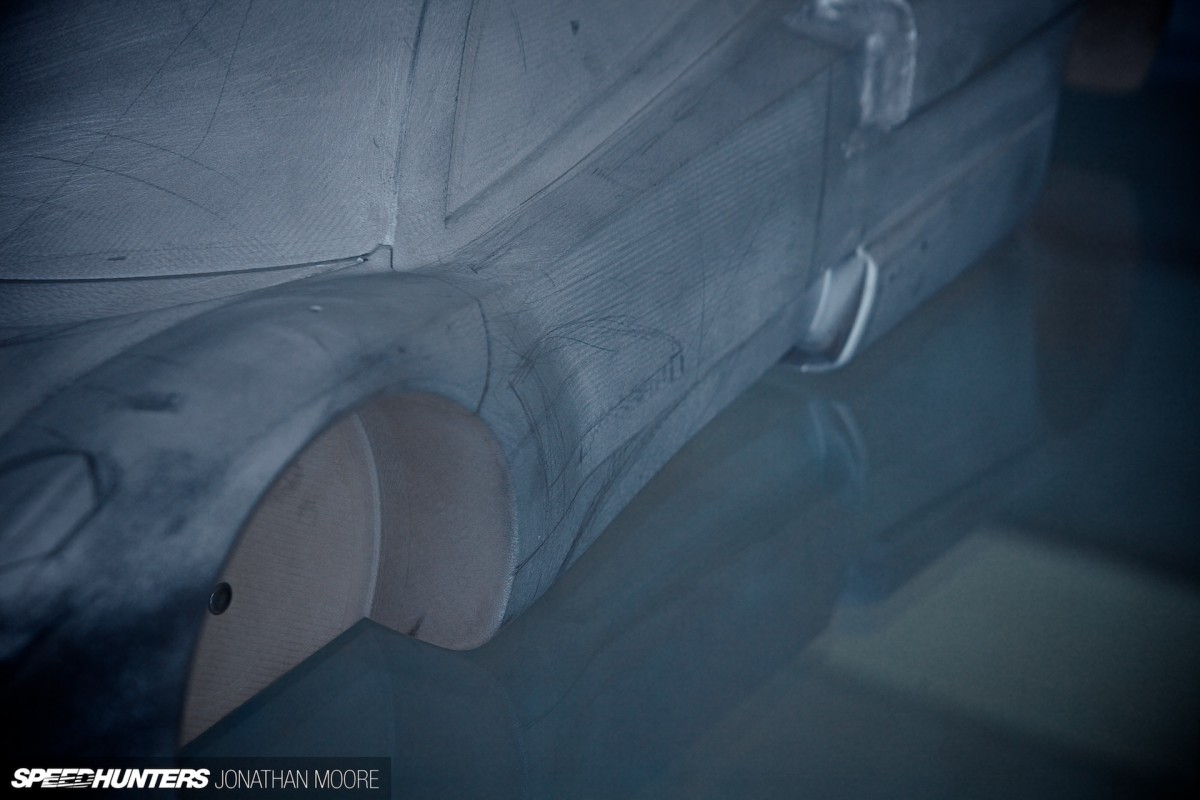
Being able to examine them from every angle meant picking up on the progress made between iterations. This first model was quite rough, showing the starting point for the serious part of the Huayra’s design process. This initial model, a sketch in physical form, shows the heavy Zonda influence that was the loose starting point for the new car.
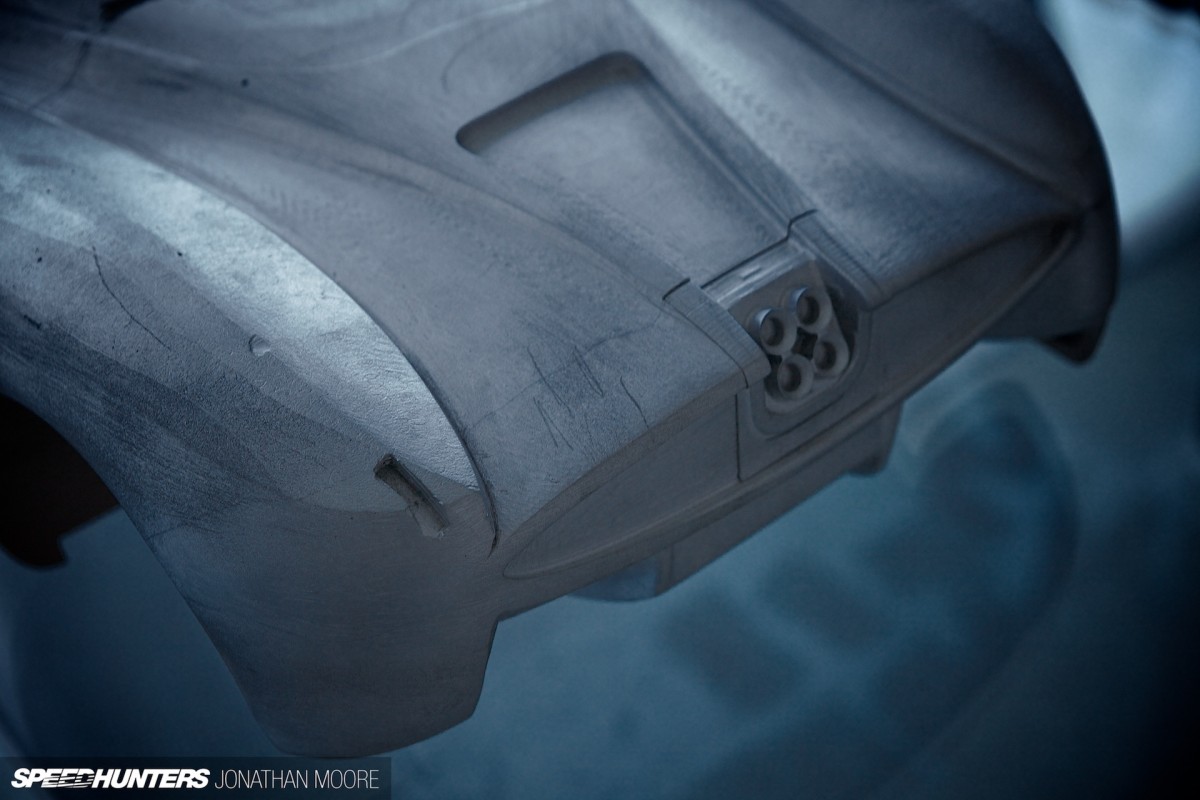
The overall proportion and scale was much more angular and muscular than the organic-looking car it would rapidly morph into. Pencil marks show where the Pagani team physically marked up the model to show where detail changes were to be incorporated.
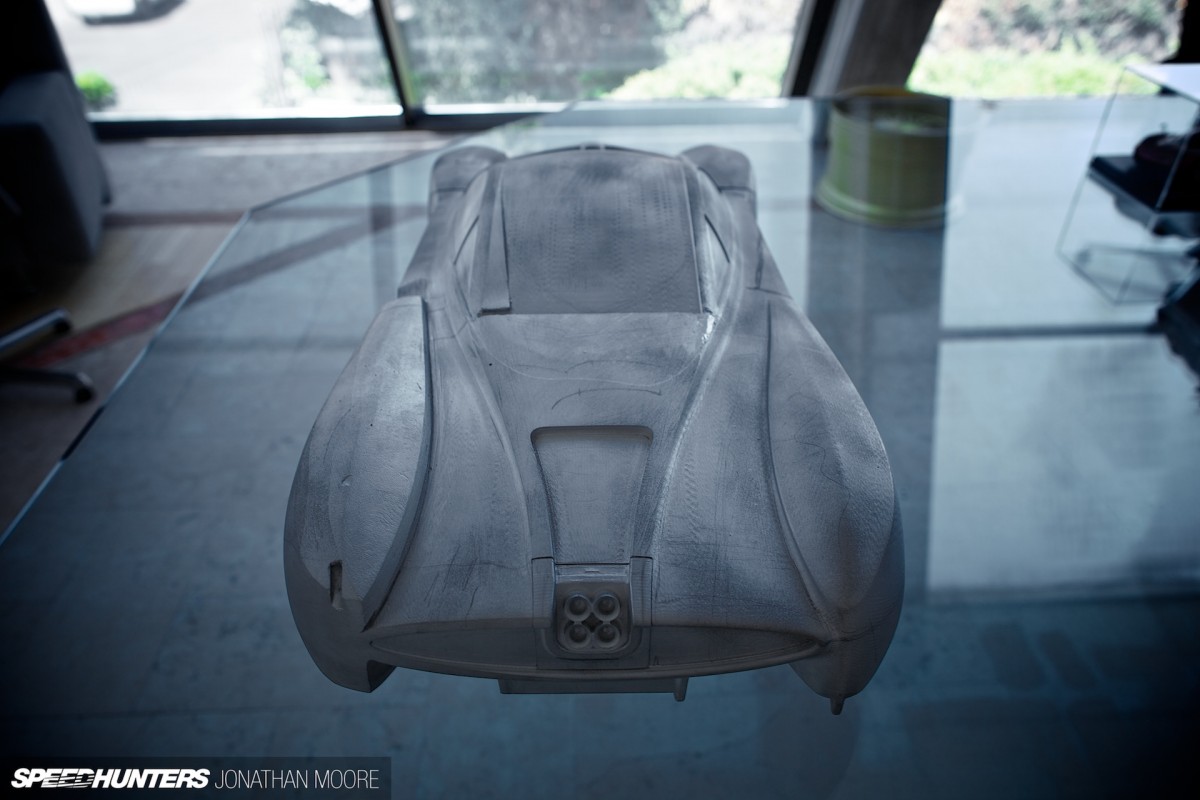
Interestingly, this early version is asymmetrical, trying out subtly different approaches on each side of the model. Gullwings doors were prescribed from the off.
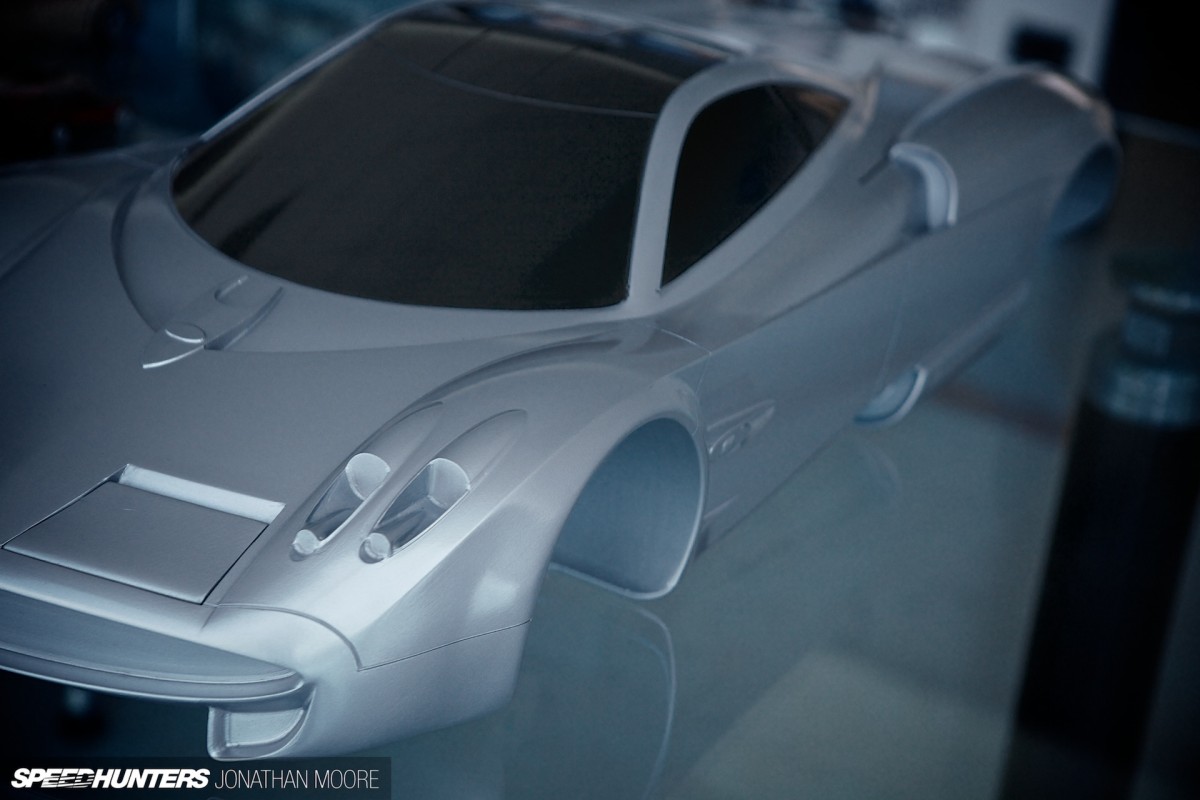
The second version shows how clear Horacio was about the general form the Huayra was to take from very early on. There’s a drastic change in ethos with this iteration; the belt line is completely changed, far more sinuous, and much more in line with how the final car would look.
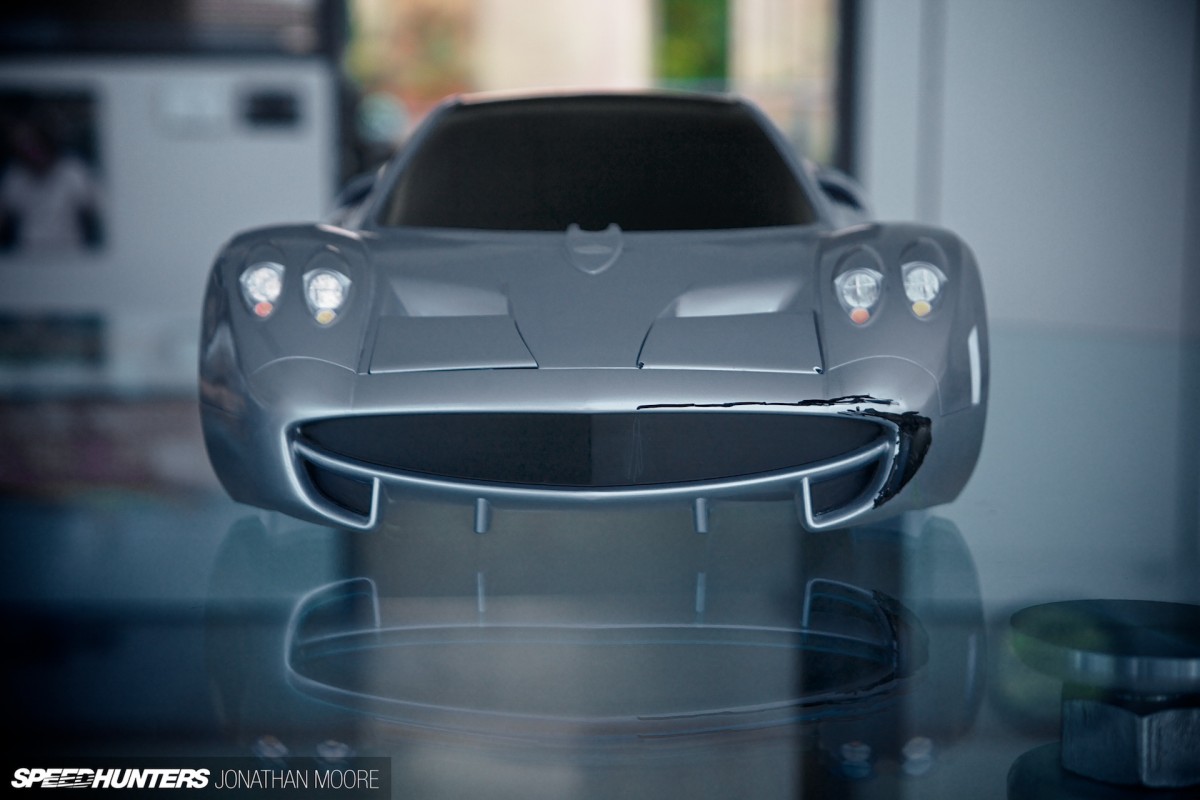
From now on it’s a case of hunt the change, using the pen marks to help spot the revisions. The front intakes grow and flow further towards the windscreen; the ducts behind the front wheels elongate and curve to follow the arch; the vertical lines that define the extents of the rear become more linear.
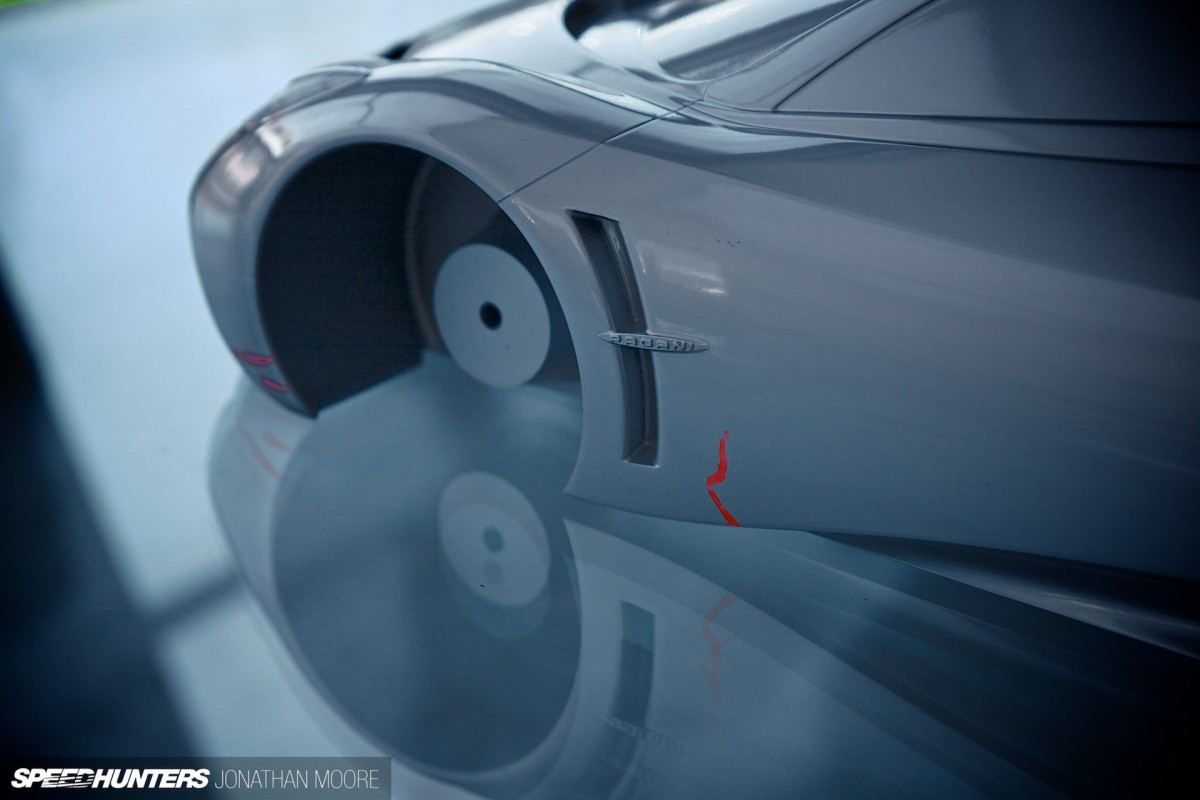
By the fourth version, there are more radius changes and adding of small details, like the Pagani badge on the front side ducts and revised lower side intakes. Remember, these were being hewn out of solid blocks each time.
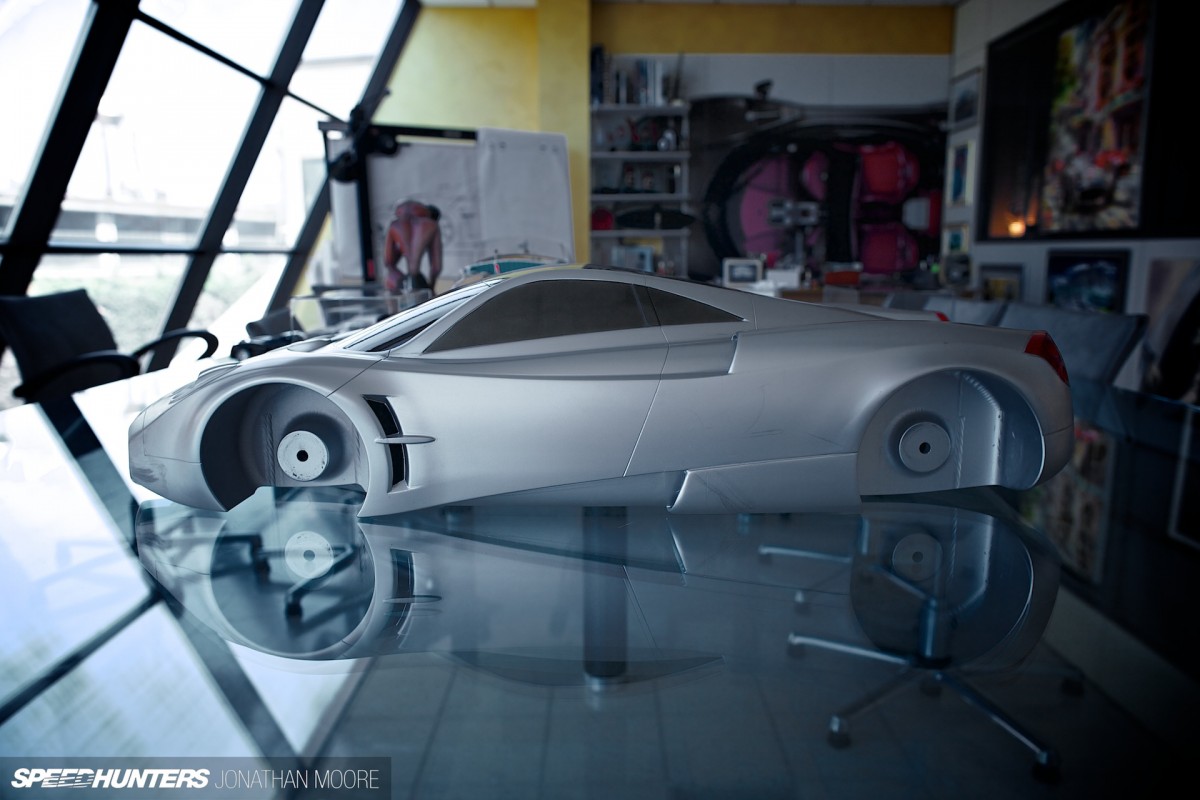
V5, and the waist is now pretty clearly set. you’d be hard pressed to see changes between this and the production version – and yet still the iterative evolution continues.
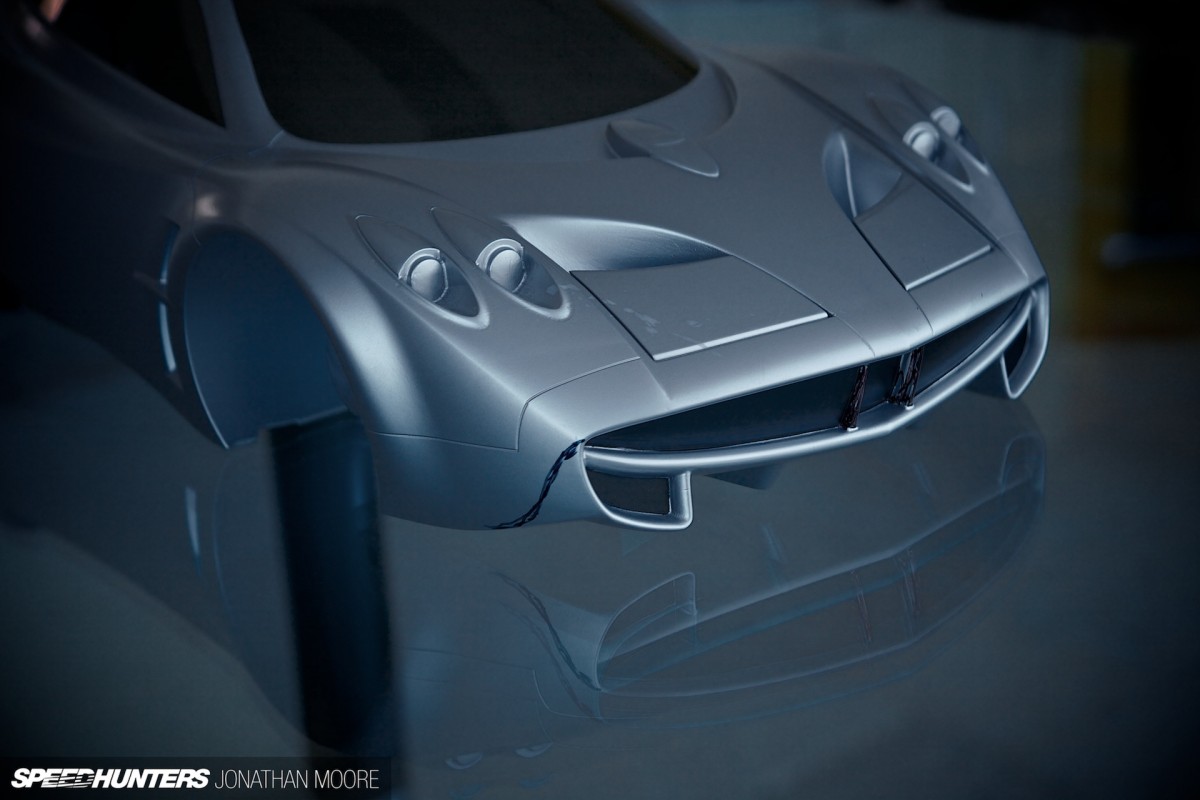
Sometimes in retrospect the changes seem obvious, like the cutting back and reduction in profile of the almost protruding front intakes seen here. This makes the lower part of the nose much more subdued in the context of the front’s styling, creating the inverted bracket look that carried through to the final car.
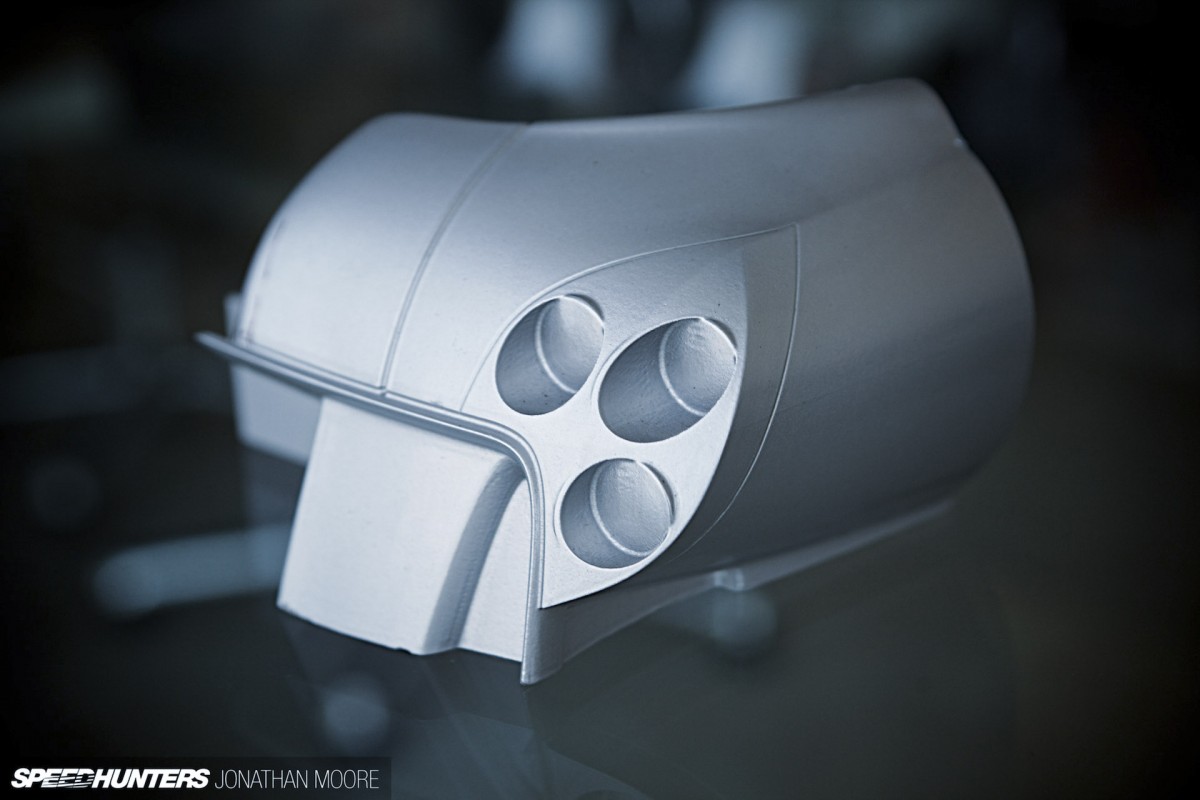
The smaller break-out models were used to refine certain parts before being incorporated into the next iteration model.
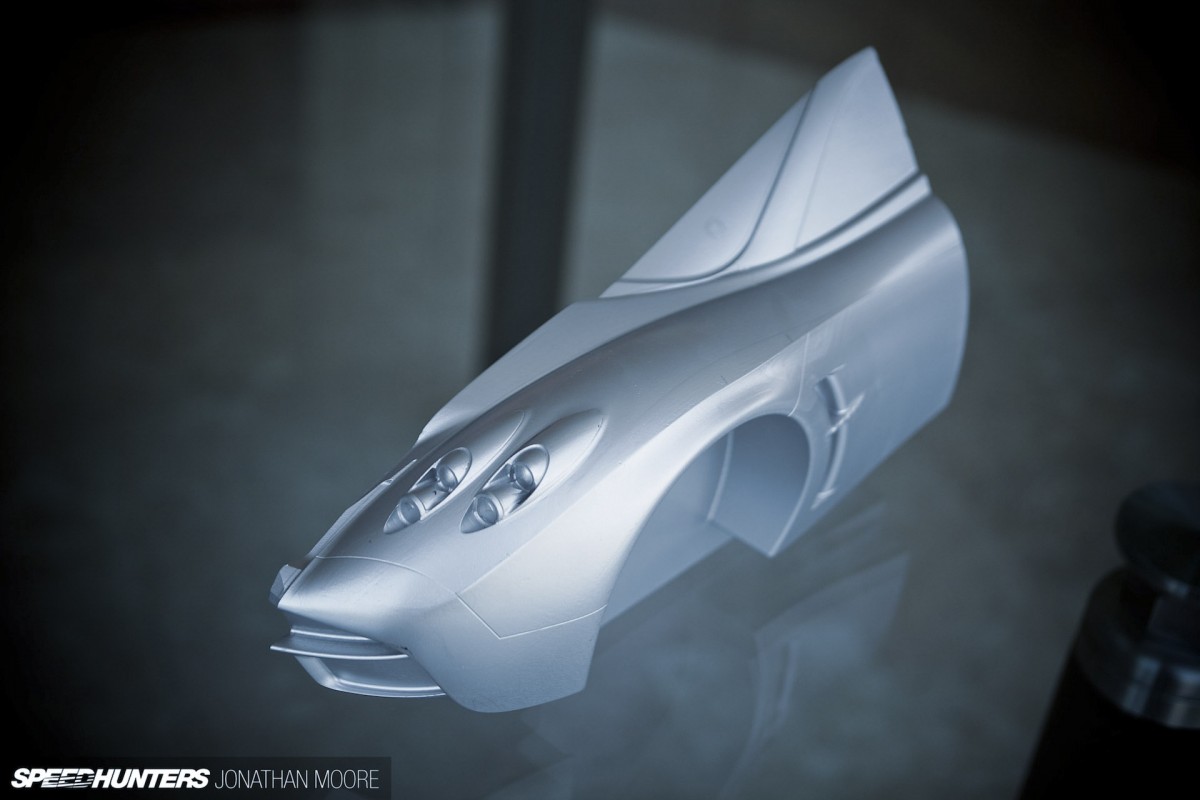
Even these present interesting aspects, like this shark-fin front fender section!
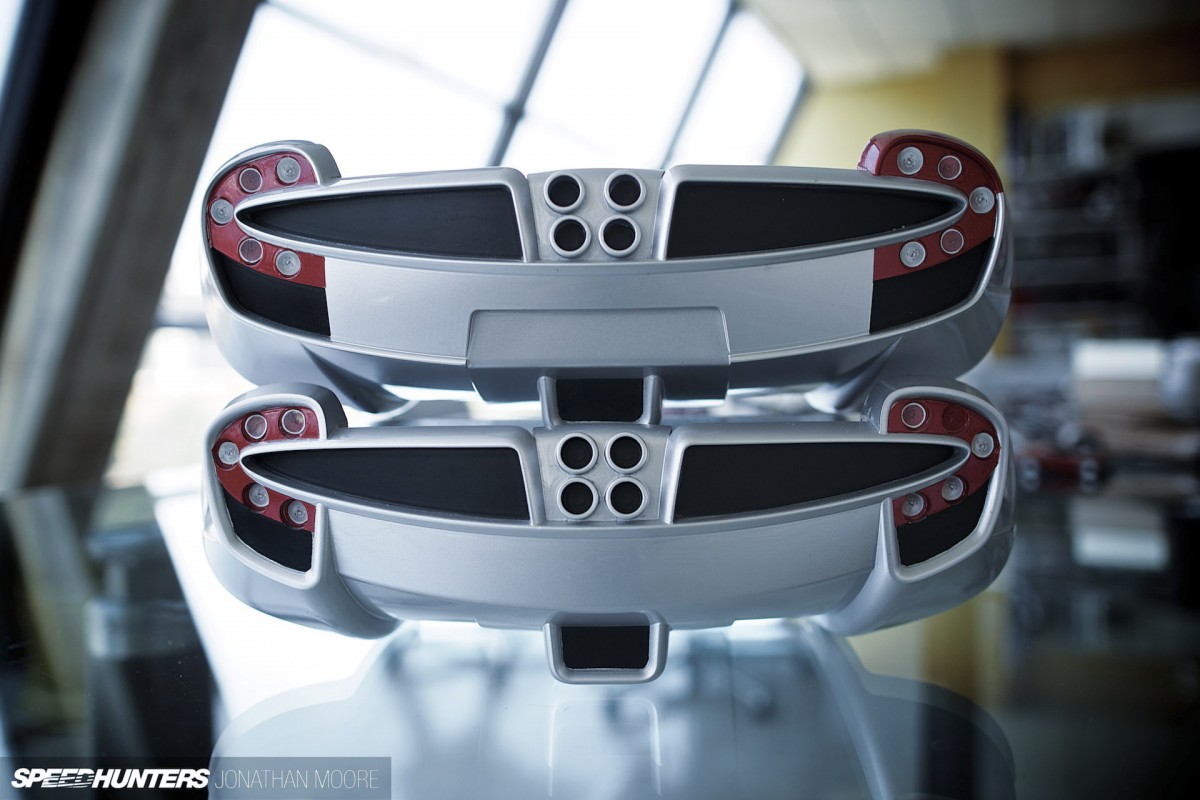
With some details, it’s like a game of spot the difference, seeing which subtle lines or details have been changed.
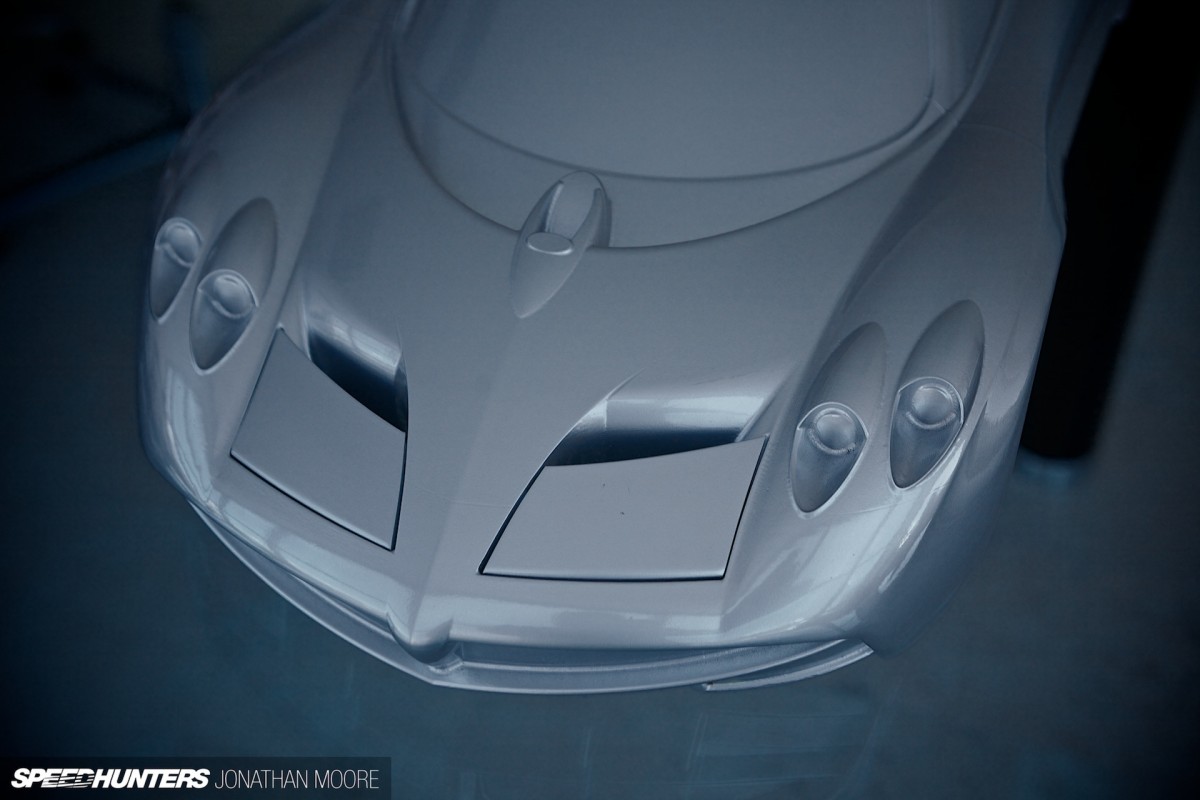
The Huayra’s active aero was set from the beginning. In fact, Horacio Pagani had been working on the principle even before founding his own company. It was purely the technology not being sufficiently mature that prevented him using it on the Zonda, despite incorporating these kind of flaps into initial sketches back in the early ’90s.
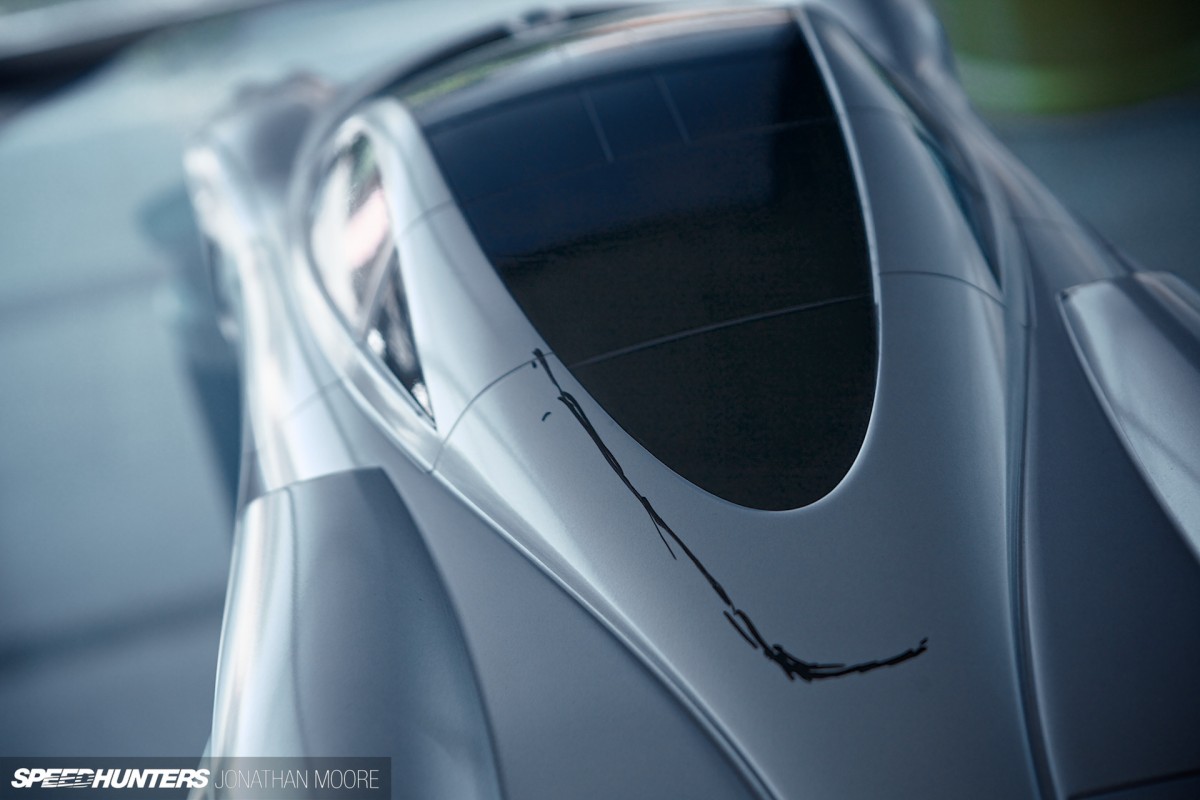
In version seven there are surprisingly major changes still being made, even if the overall form has remained pretty static. The rear windscreen was extended further down the rear deck, for instance.
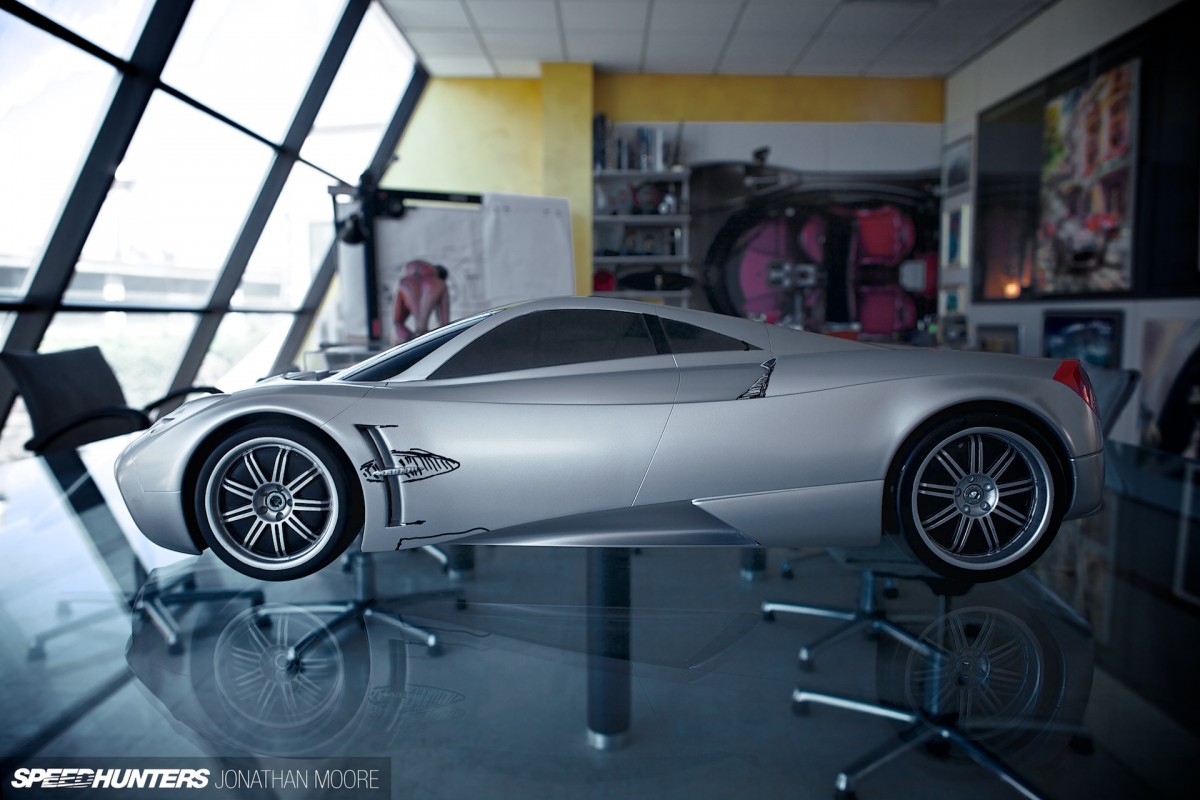
With the Huayra, the link between wind and Pagani was more than in name. The car sports a number of lines with clearly defined beginning and ends, each curving and sinuous as if formed and sustained by the movement of air.
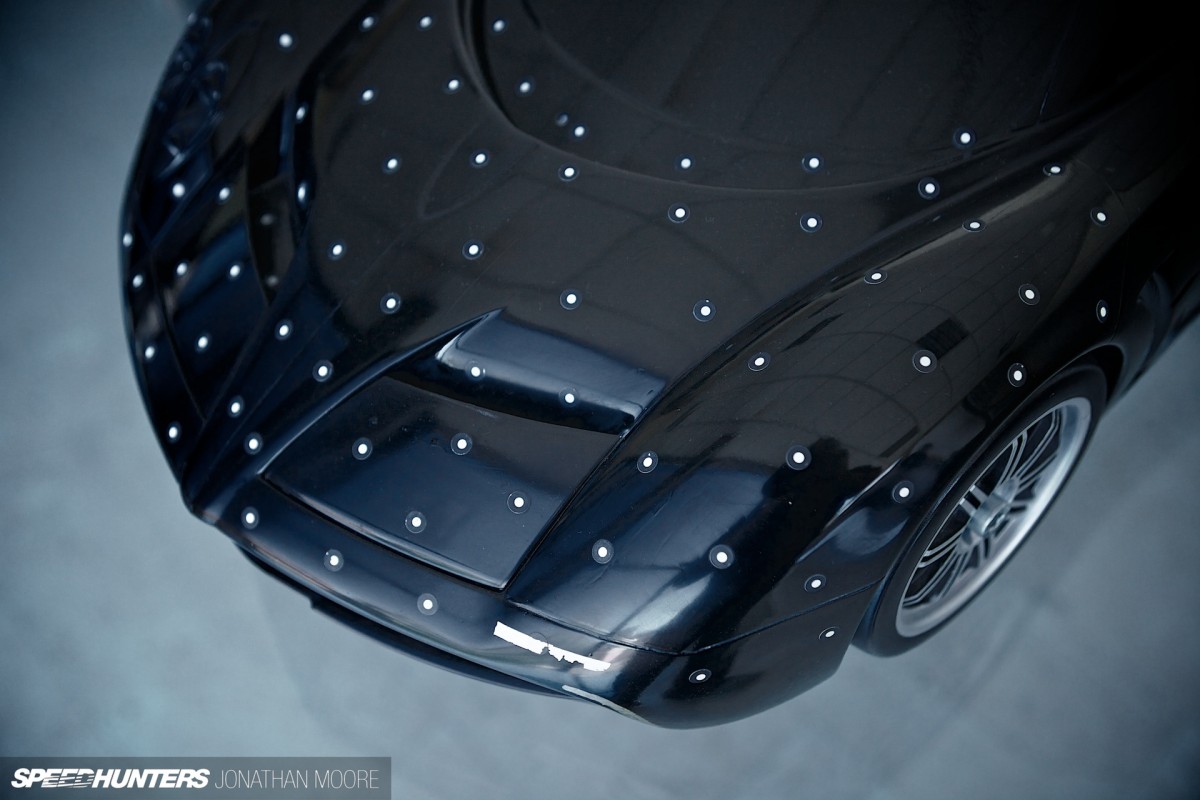
With wheels attached and dots applied for data collection, the final black-painted model was shipped off to the wind-tunnel to help collect baseline information. From now on, the heavy lifting would be done in the machine shop and with data, but these models still exist to show the organic birth of the Huayra.
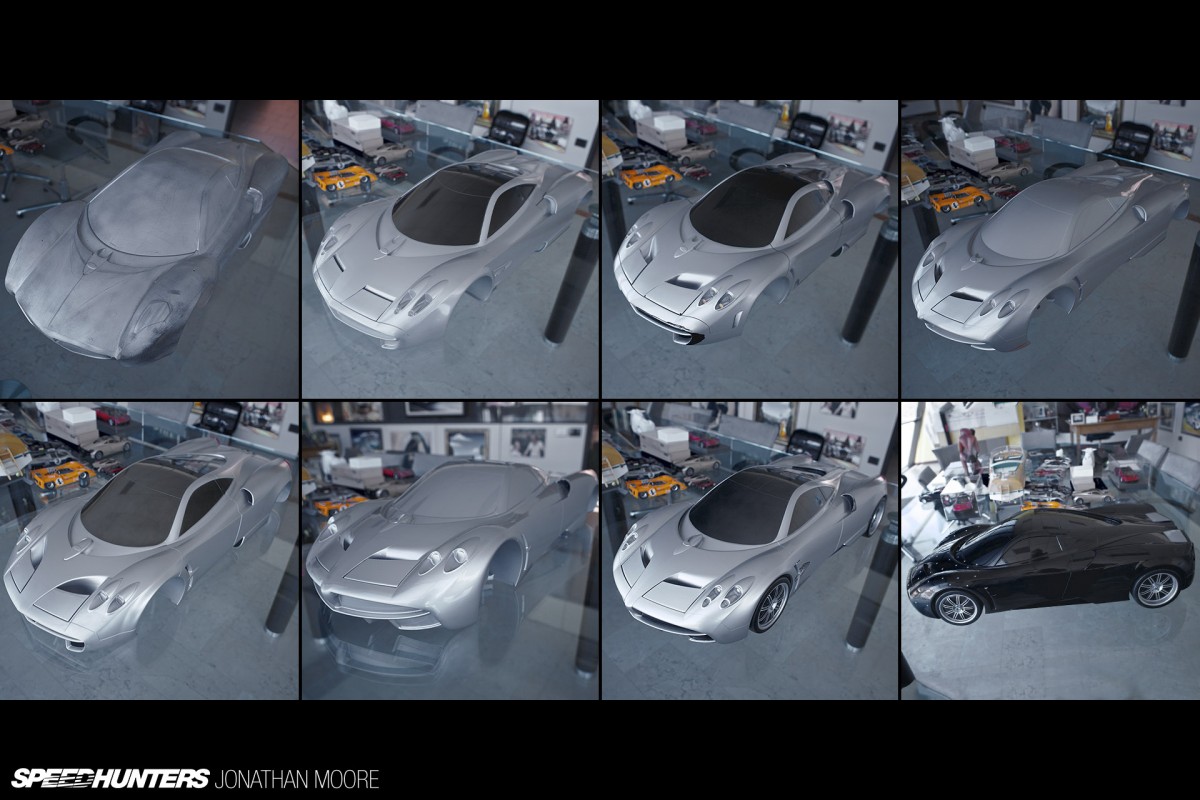
Eight simple models. Eight steps representing just a portion of the process of designing a car, but an important window into the work involved and the emotional investment required.
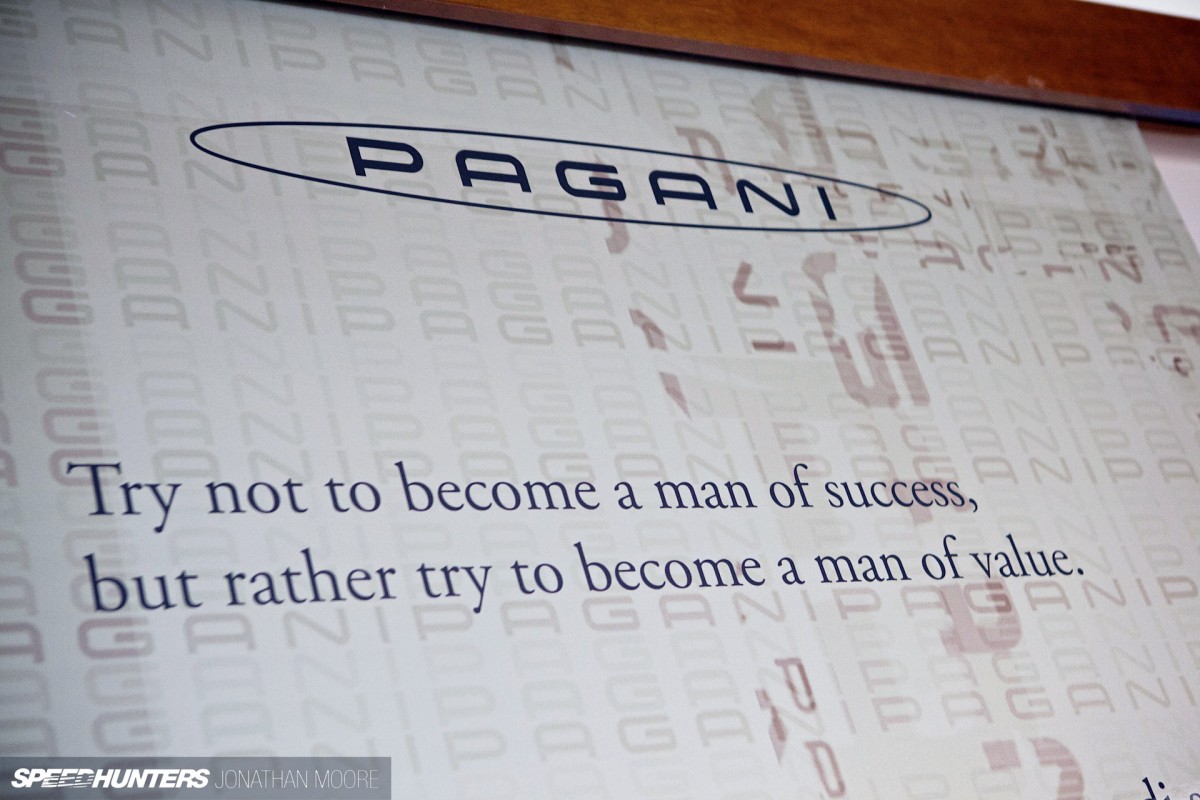
It’s clear that a Pagani is formed of much more than just its high tech components: the soul and ethos of the man himself and all his influences are just as important. The quote on the wall outside Horacio Pagani’s office? Albert Einstein. A humbling phrase from such a great person, and the fact it’s displayed so prominently Pagani is indicative of the man at the helm of this most extraordinary of automotive companies.
Jonathan Moore
Instagram: speedhunters_jonathan
jonathan@speedhunters.com






I prefer the sculpting design of cars far more than CAD models
I still prefer the Zonda. It has more character as a car. The Huayra is awesome, but it doesn't really make me smile, while the Zonda did.
Cool story Jonathan! Really enjoyed this
Mr. Pagani really needs to take care of the model cars well. The right side view mirror on both the Zonda and Huayra models are broken. LOL!
Anyway, this article shows why I respect Mr. Pagani so much. He does everything with a hands-on approach.
Those silver models are machined from composite tooling board......NOT WOOD.
waited for this article to show up, was not disappointed.
props to horacio for his hands-on approach.
Wonderful shot of Mr. Pagani on the bottom of page 1! Really captures a moment.
Jumping from the Liberty Walk 458 to this article was like watching an amateur graffiti artist compared Rembrandt. This is real design, this is real engineering. Horacio Pagani is an icon in the world of modern automobile design. Liberty Walk, Stance Nation....sit down, get your pencils out....class is now in session.
zephoto Thank you: he really is someone who seems permanently connected into his passion for the automobile
wow! throughly enjoyed reading every single word! Thank you very much Speedhunters and Pagani for showing this!
Still cant belive that those models are made from wood! amazing
BatfettlerSonoma Sorry for the delayed reply to your comment: I've had some back and forth with Pagani PR: and yes, they've clarified that you're correct, it was Ureol, not wood. A translation issue during the interview I'm afraid, where they were always referred to as wood! Thanks for the very important spot.
Ah, as pointed out by BatfettlerSonoma below, these Huayra models were actually made from Ureol, not wood, which rather ruined my headline! A translation issue during the interview, so apologies for that. Still, the older models are wood, and it doesn't make the Huayra models any less impressive!
jay8393 Ha, too much playing perhaps?!
Johnathan......great article...... Nice interpretation of the internal workings of Pagani.